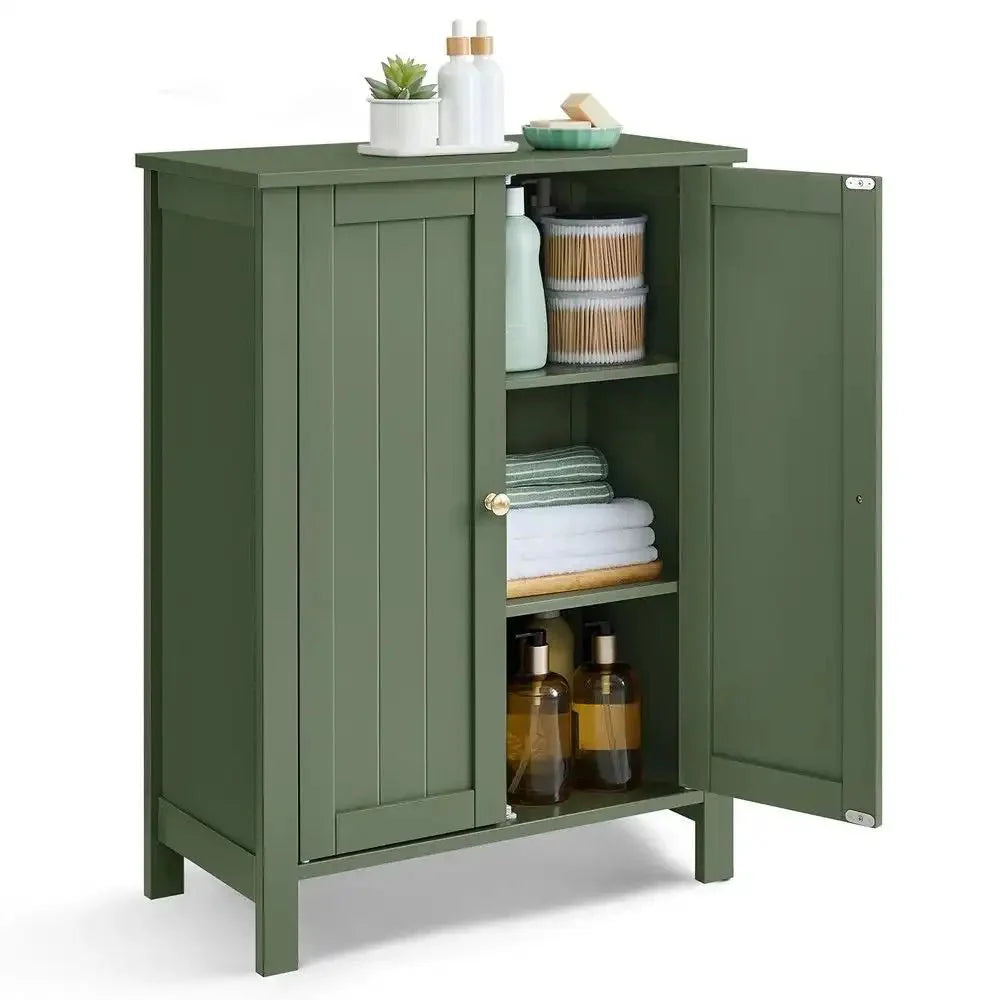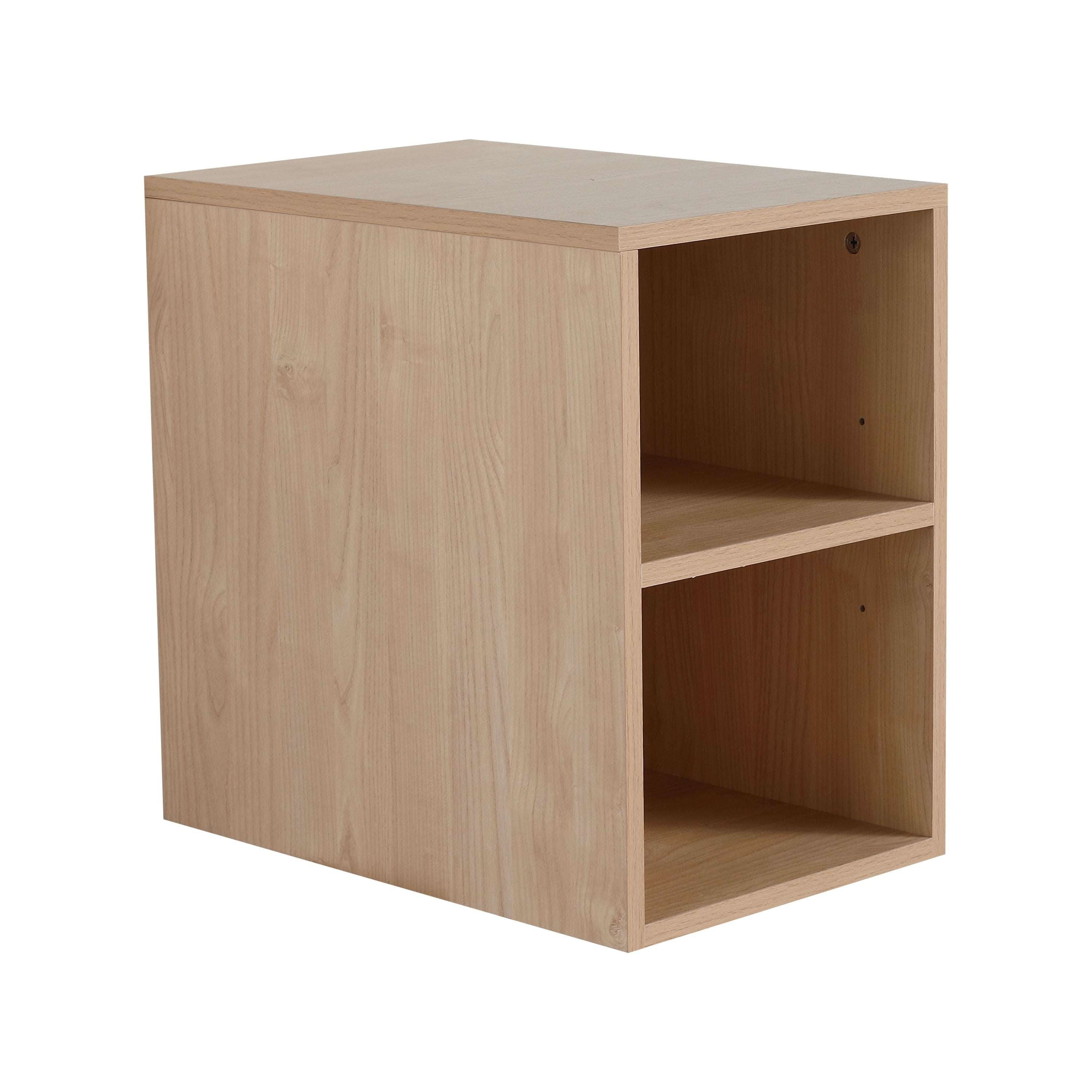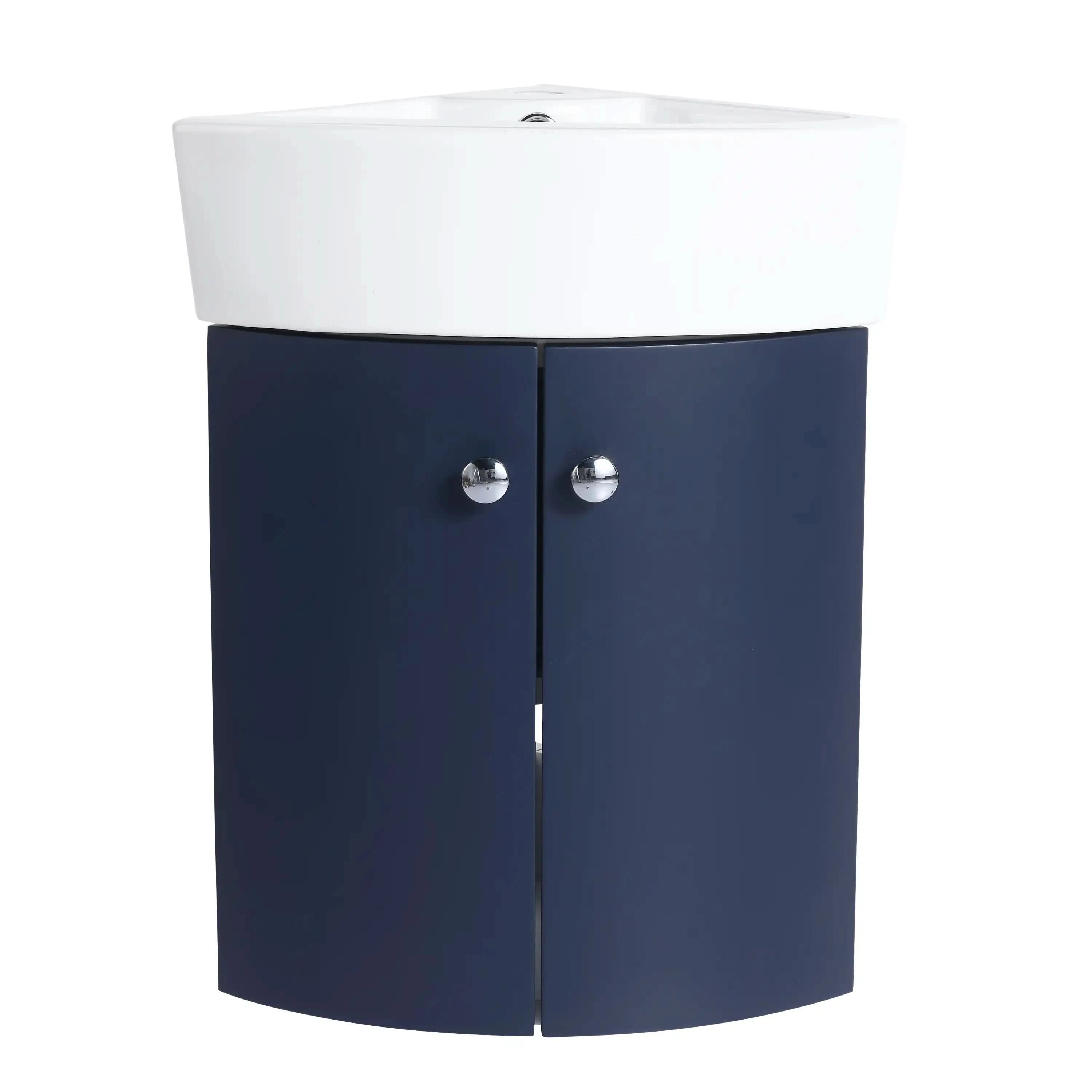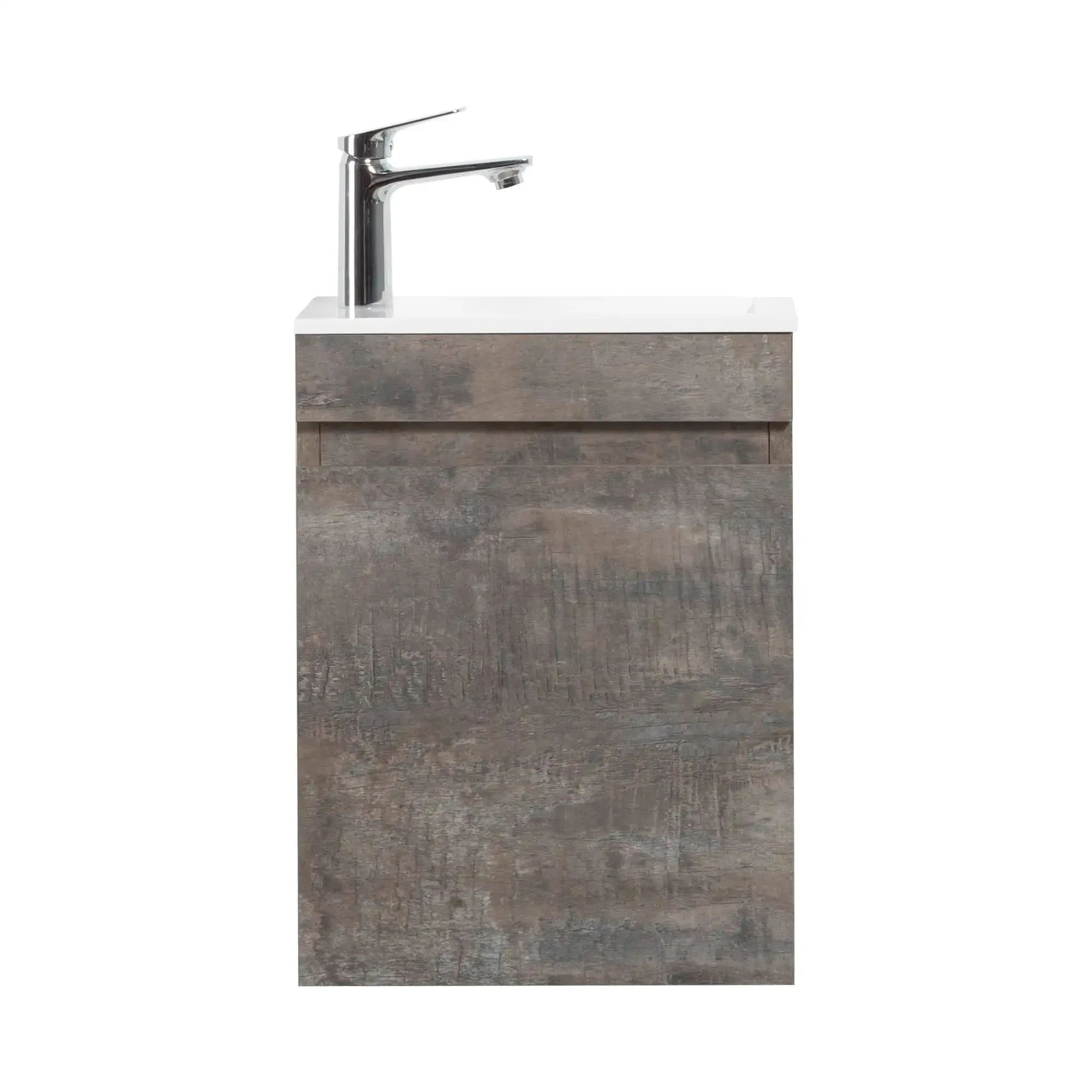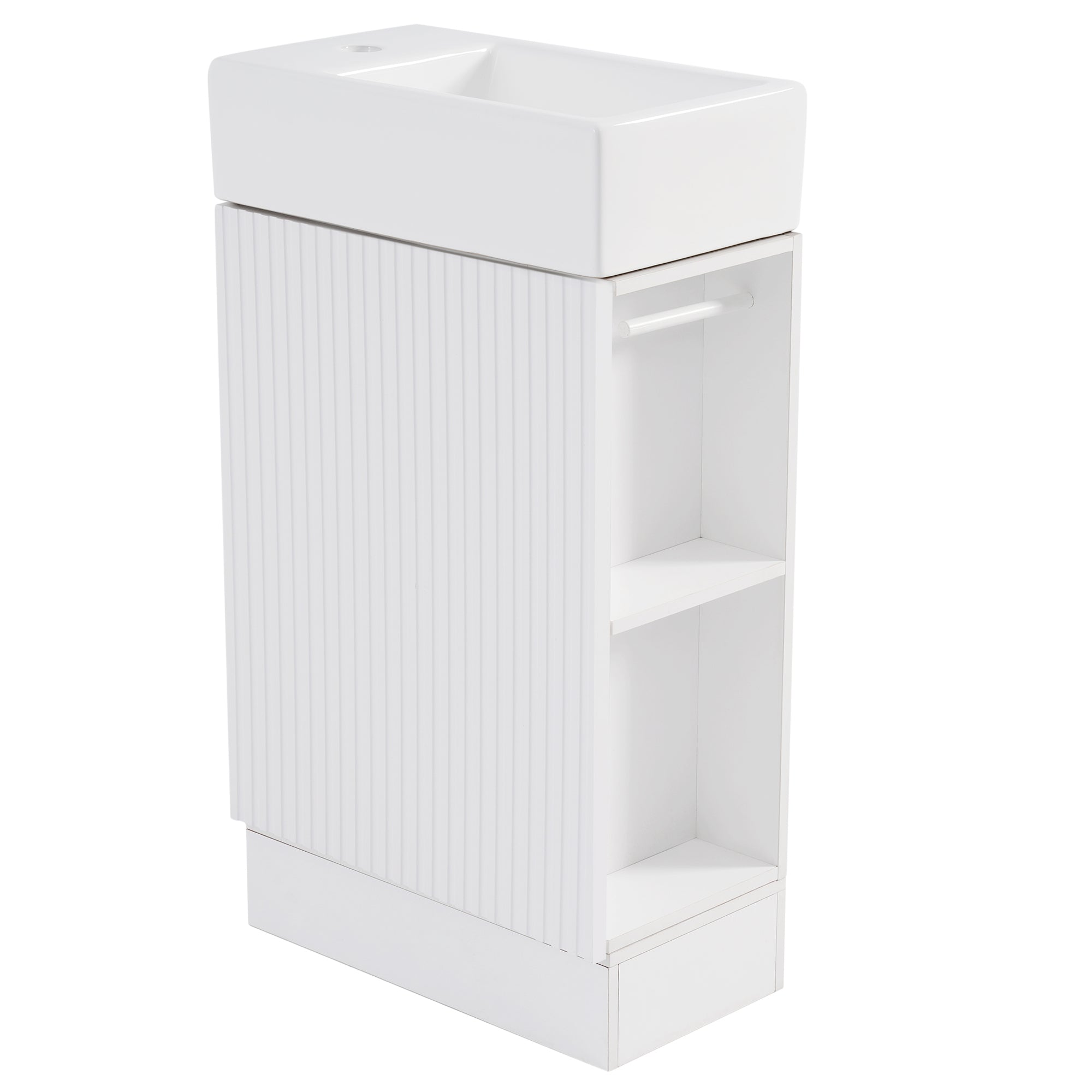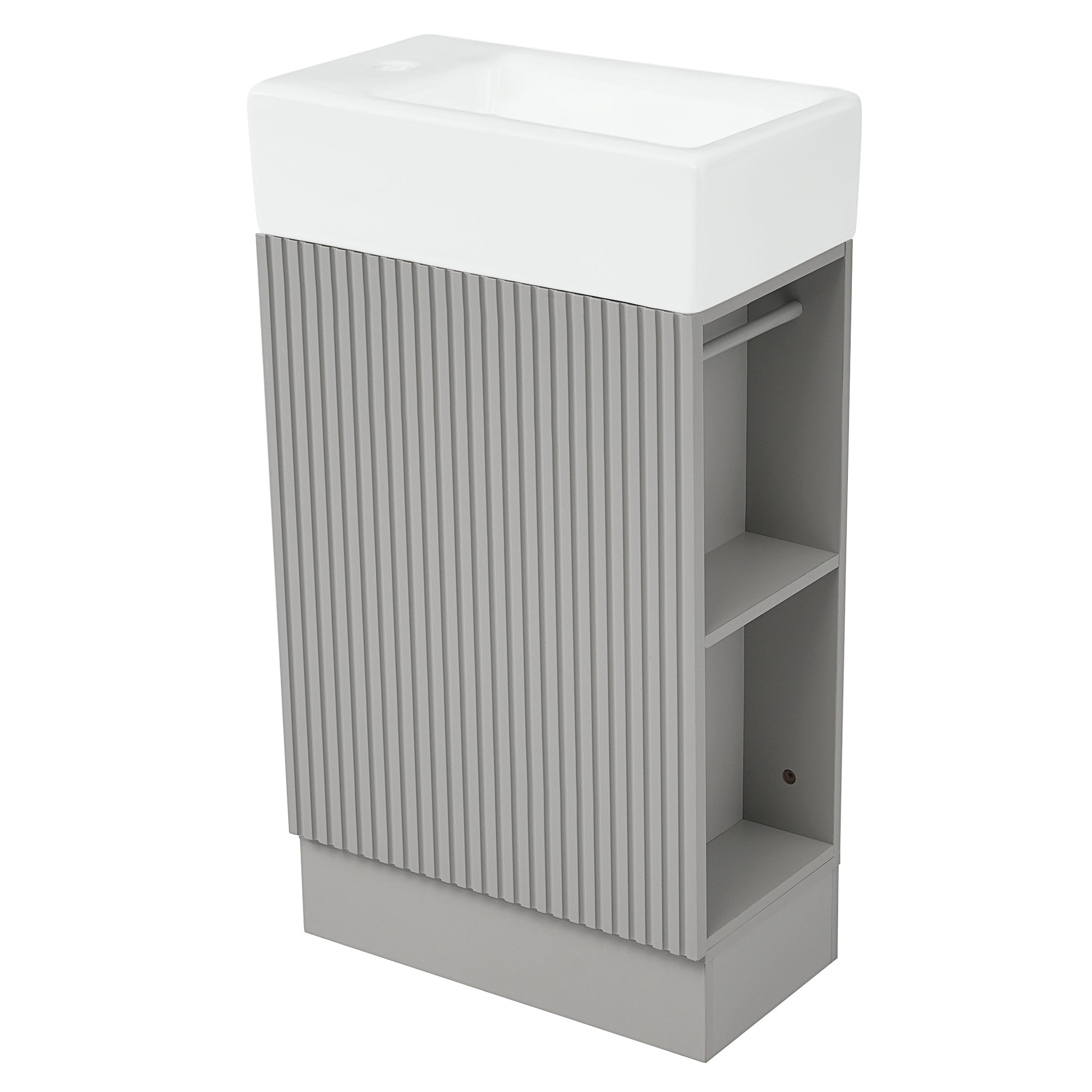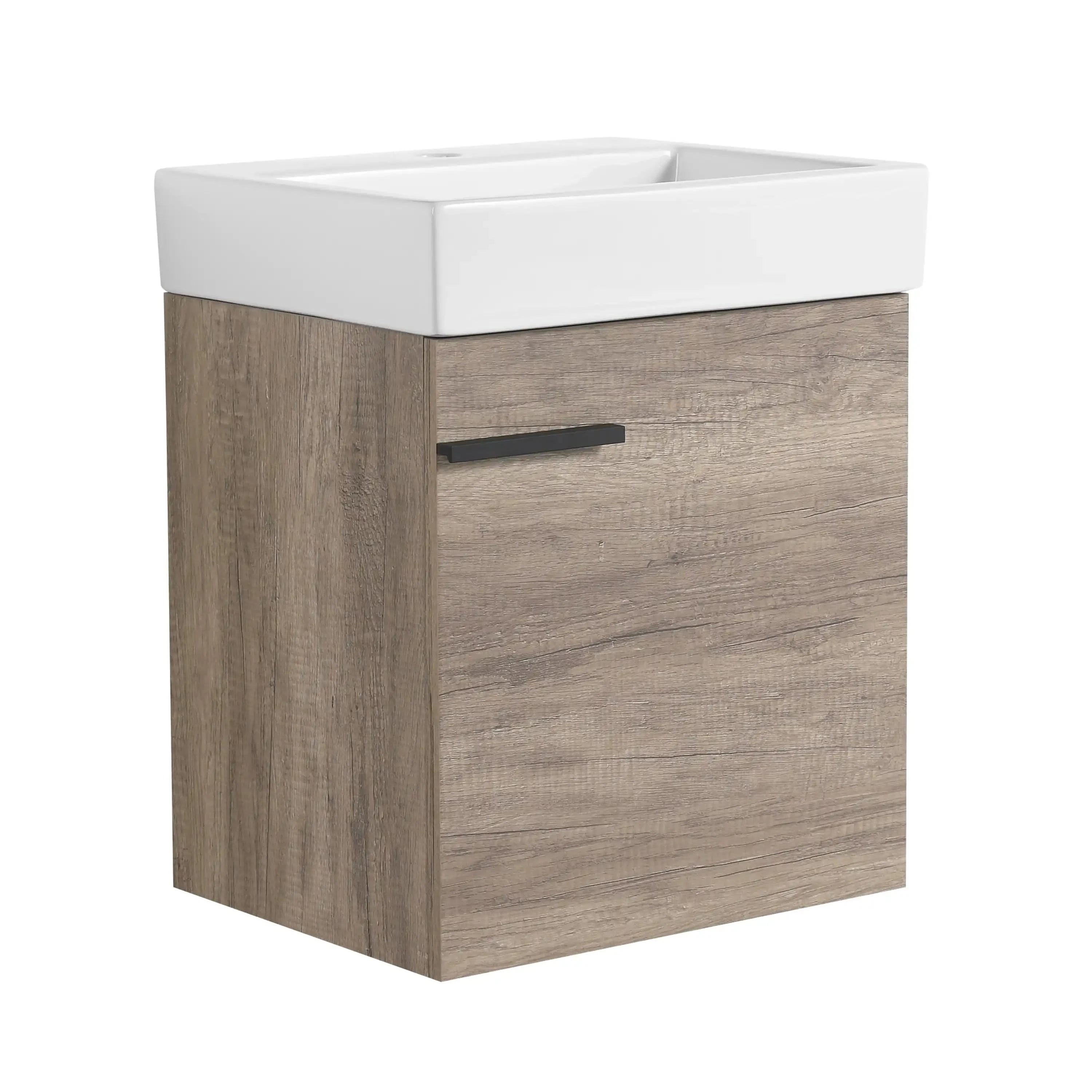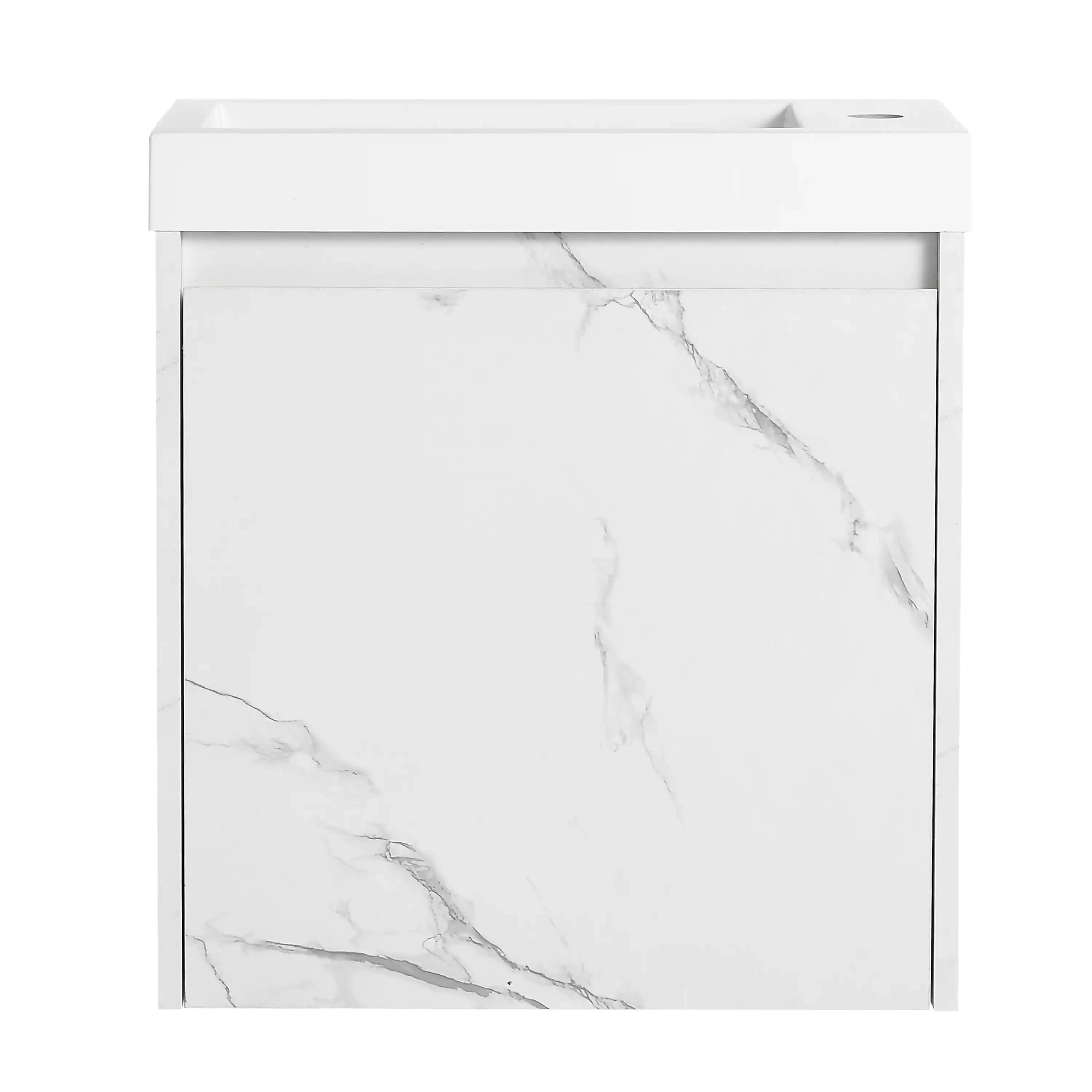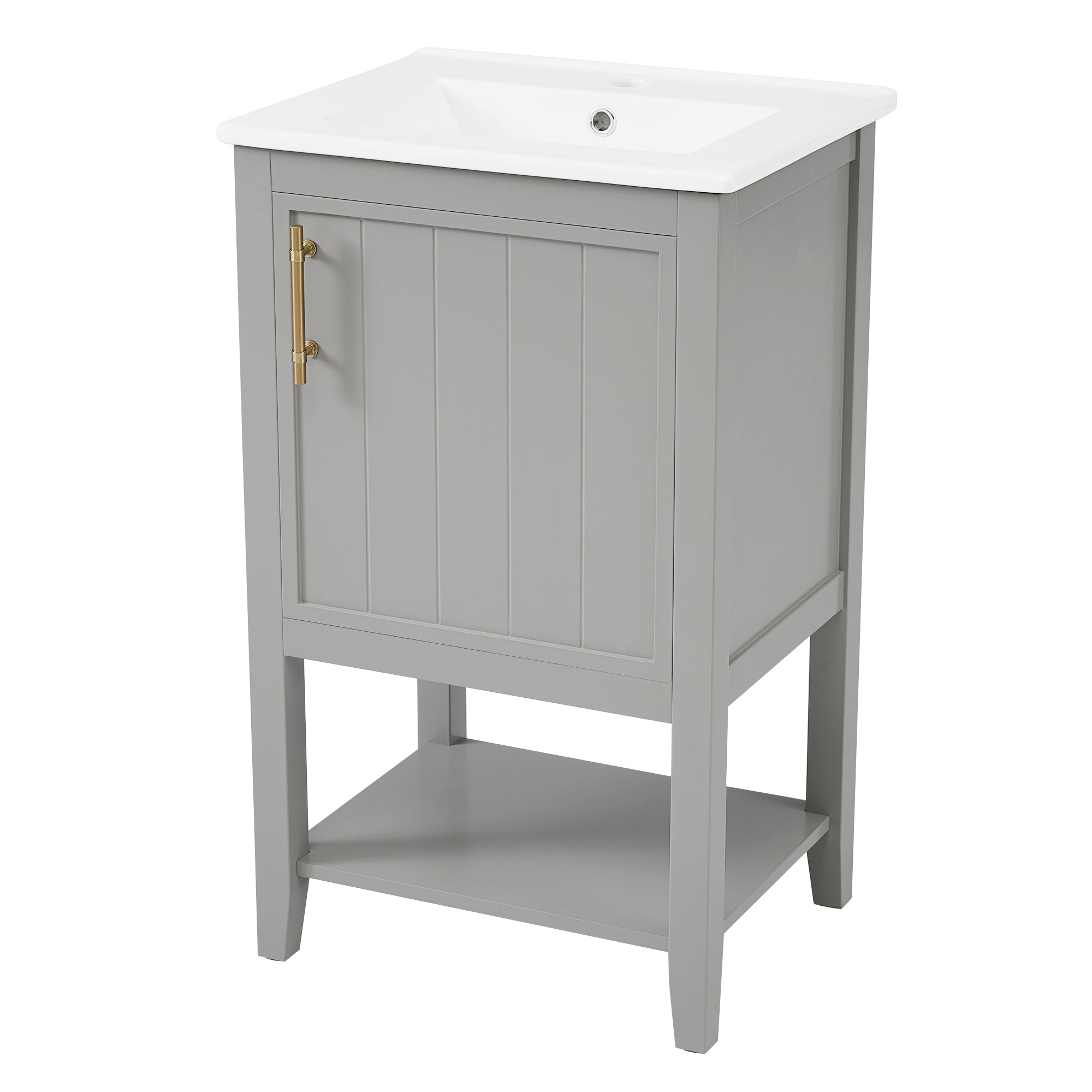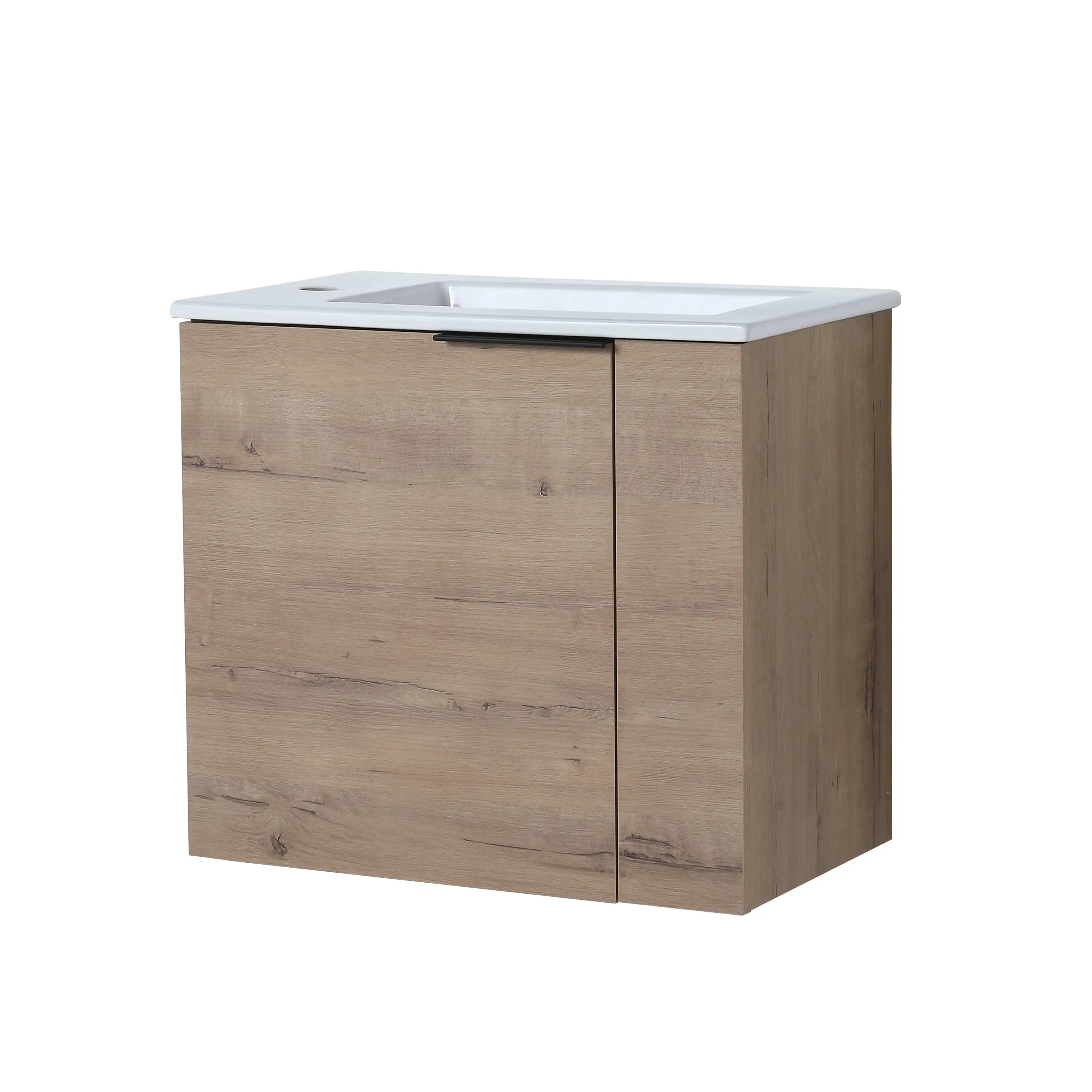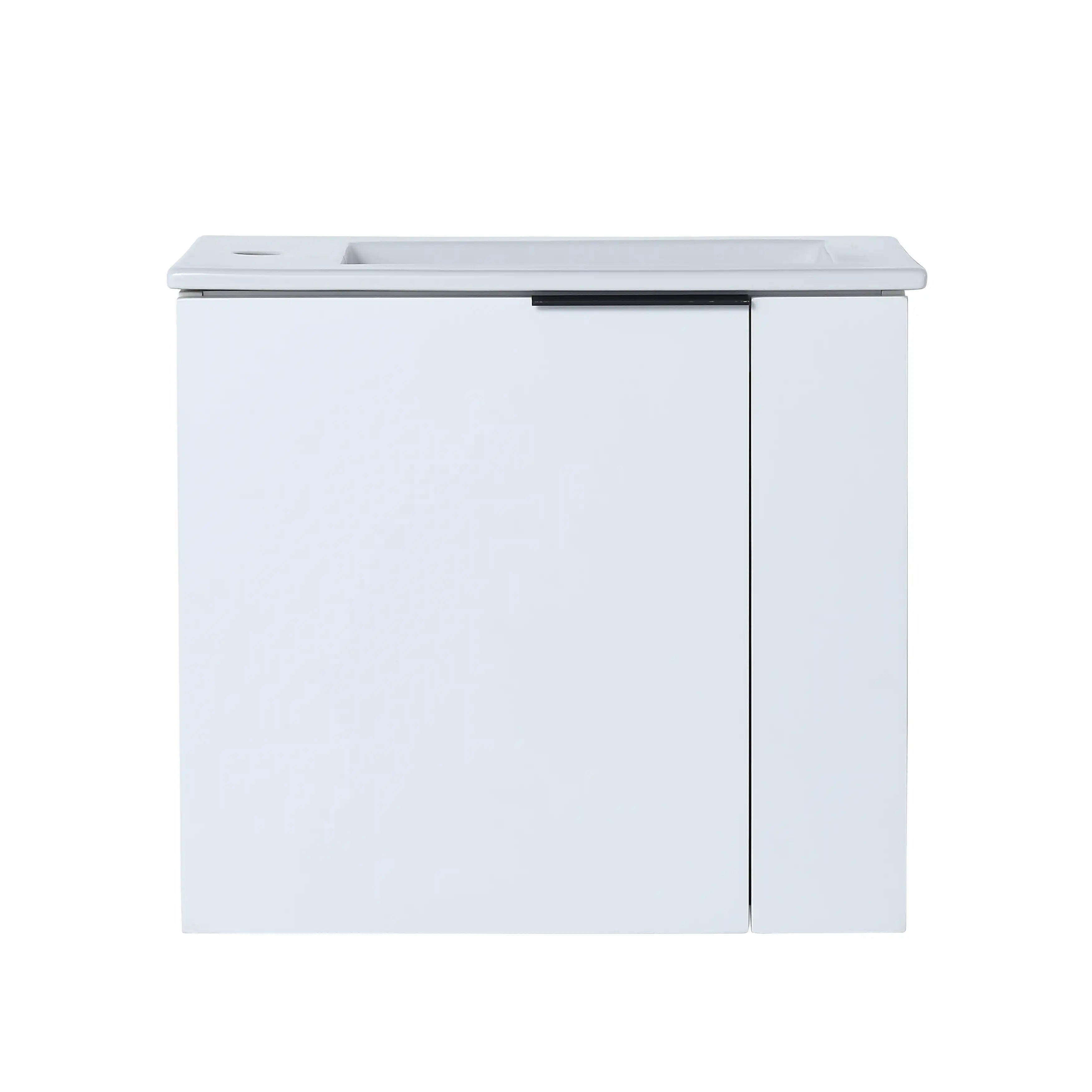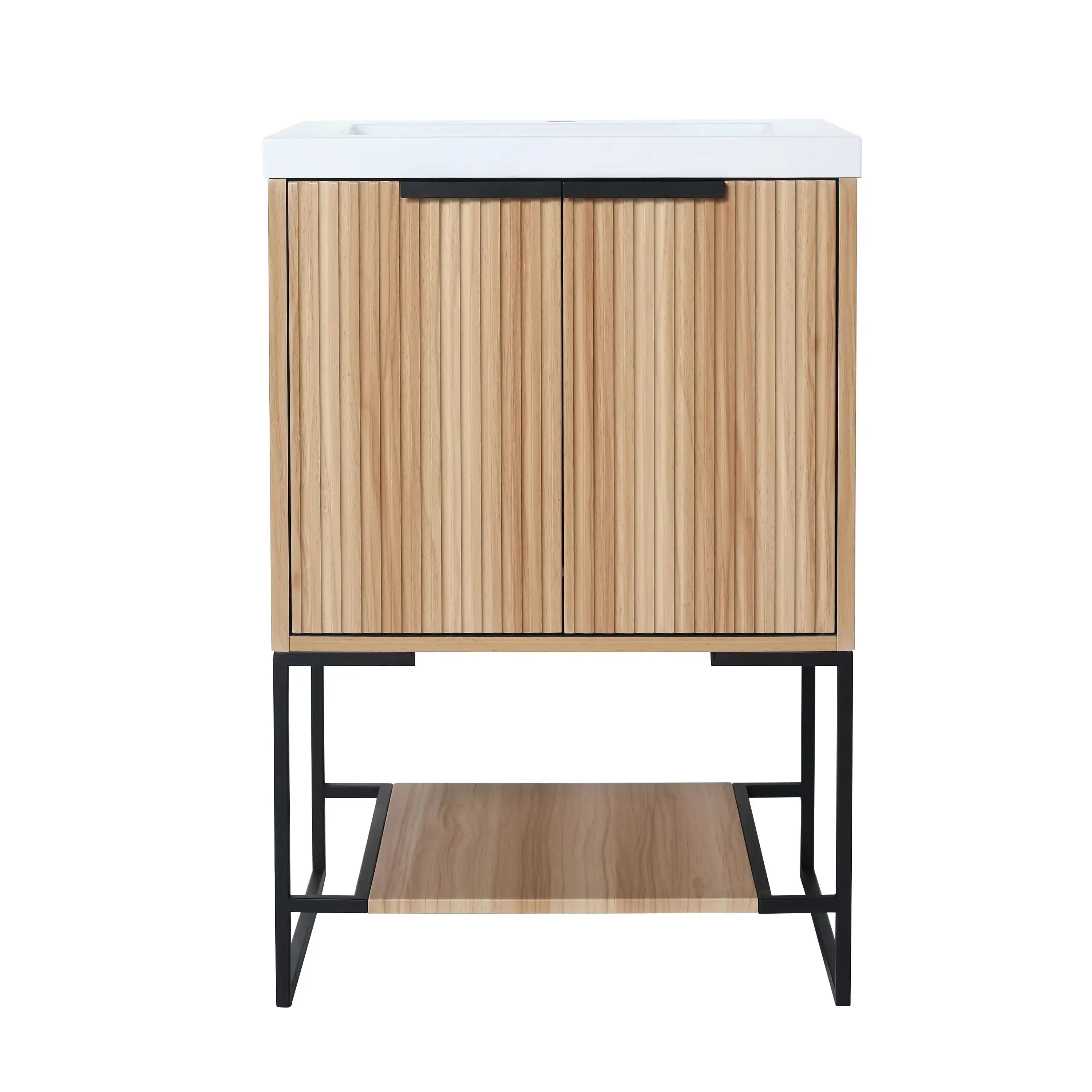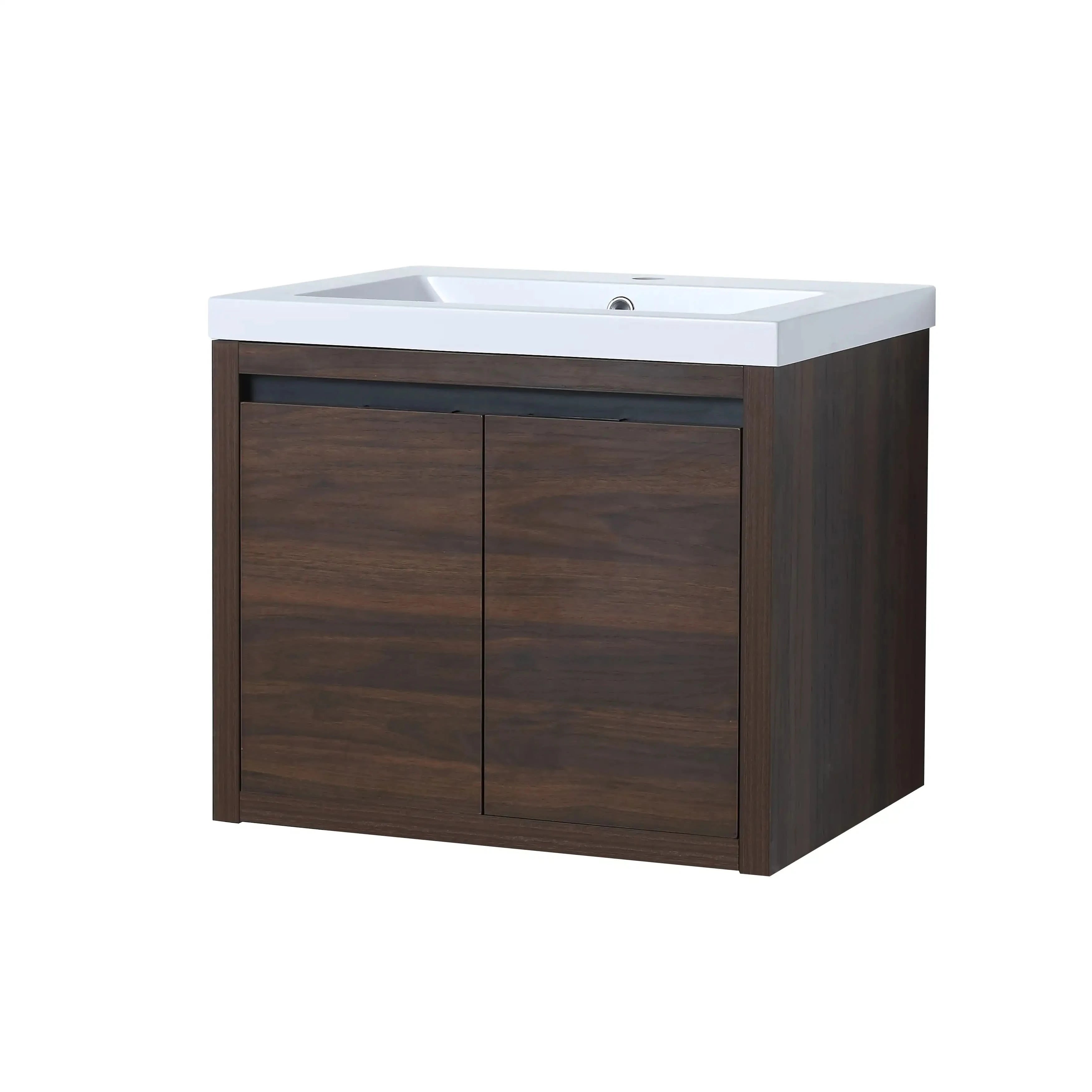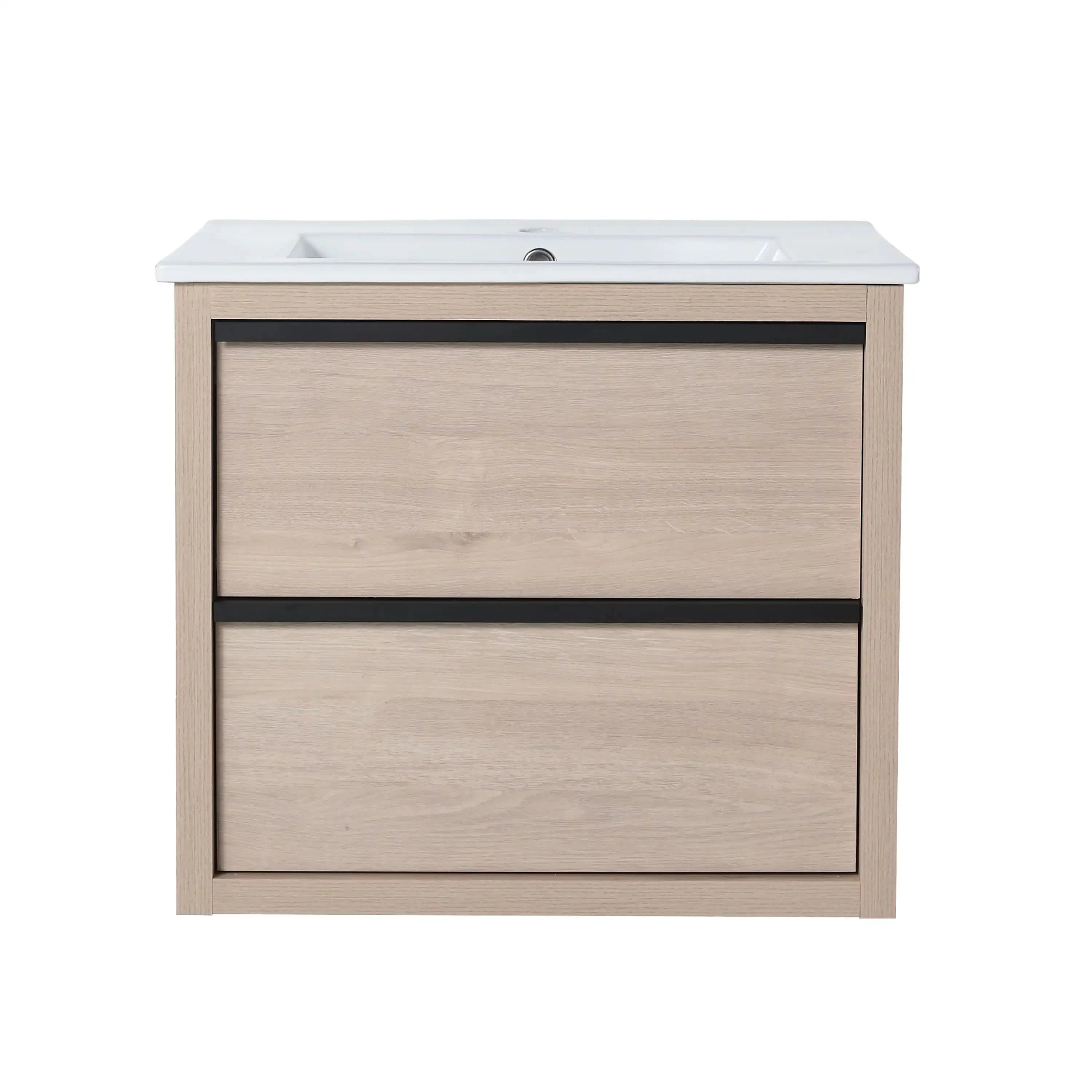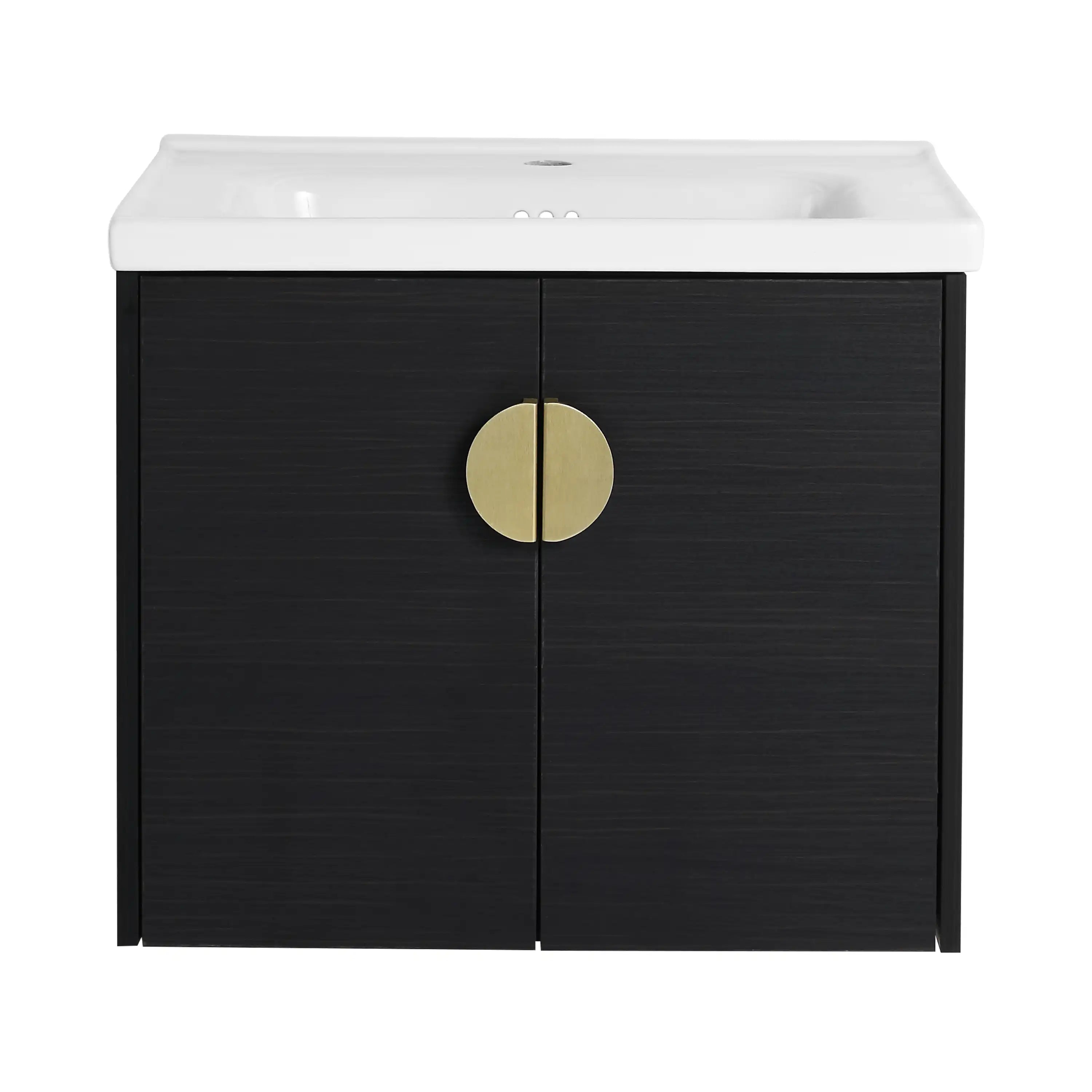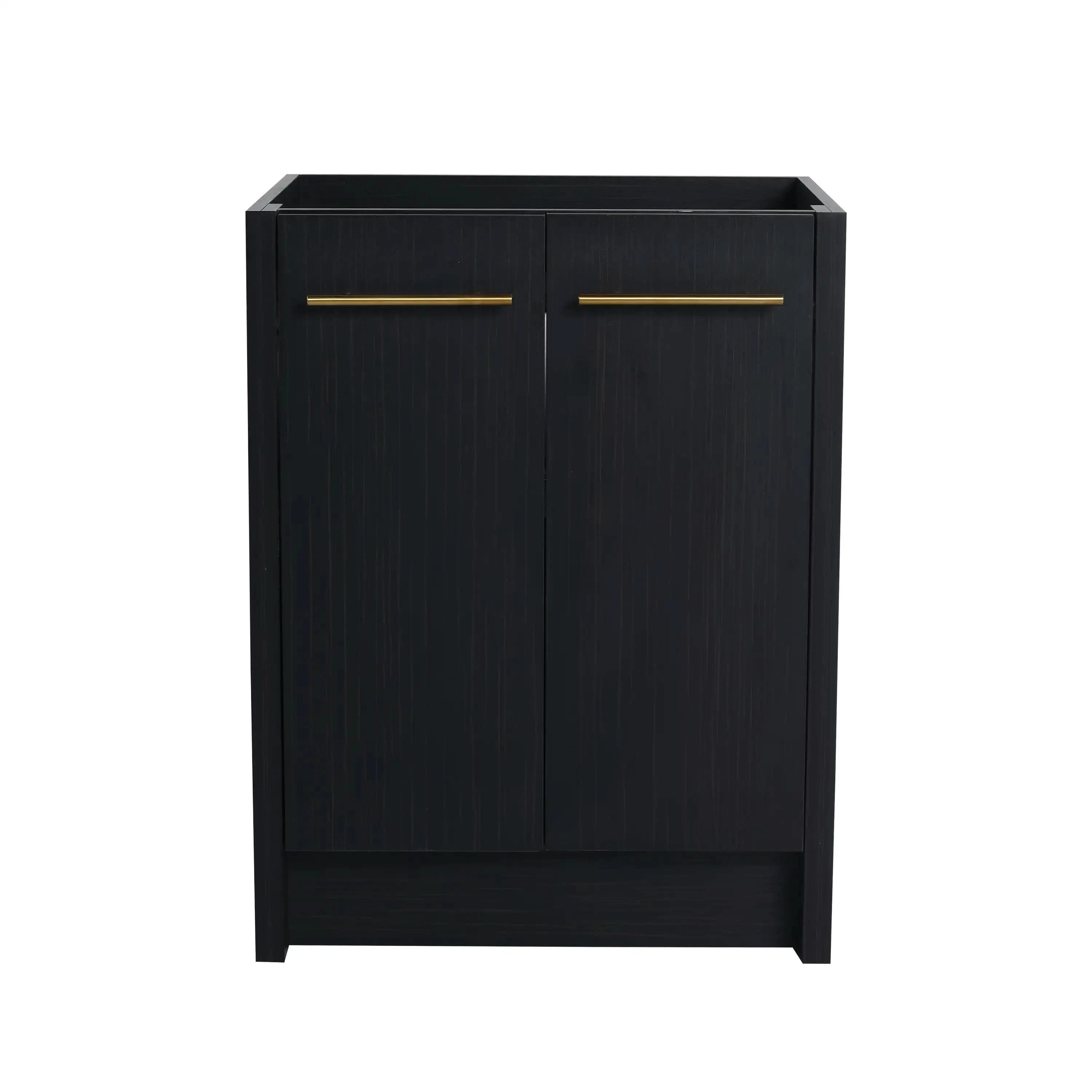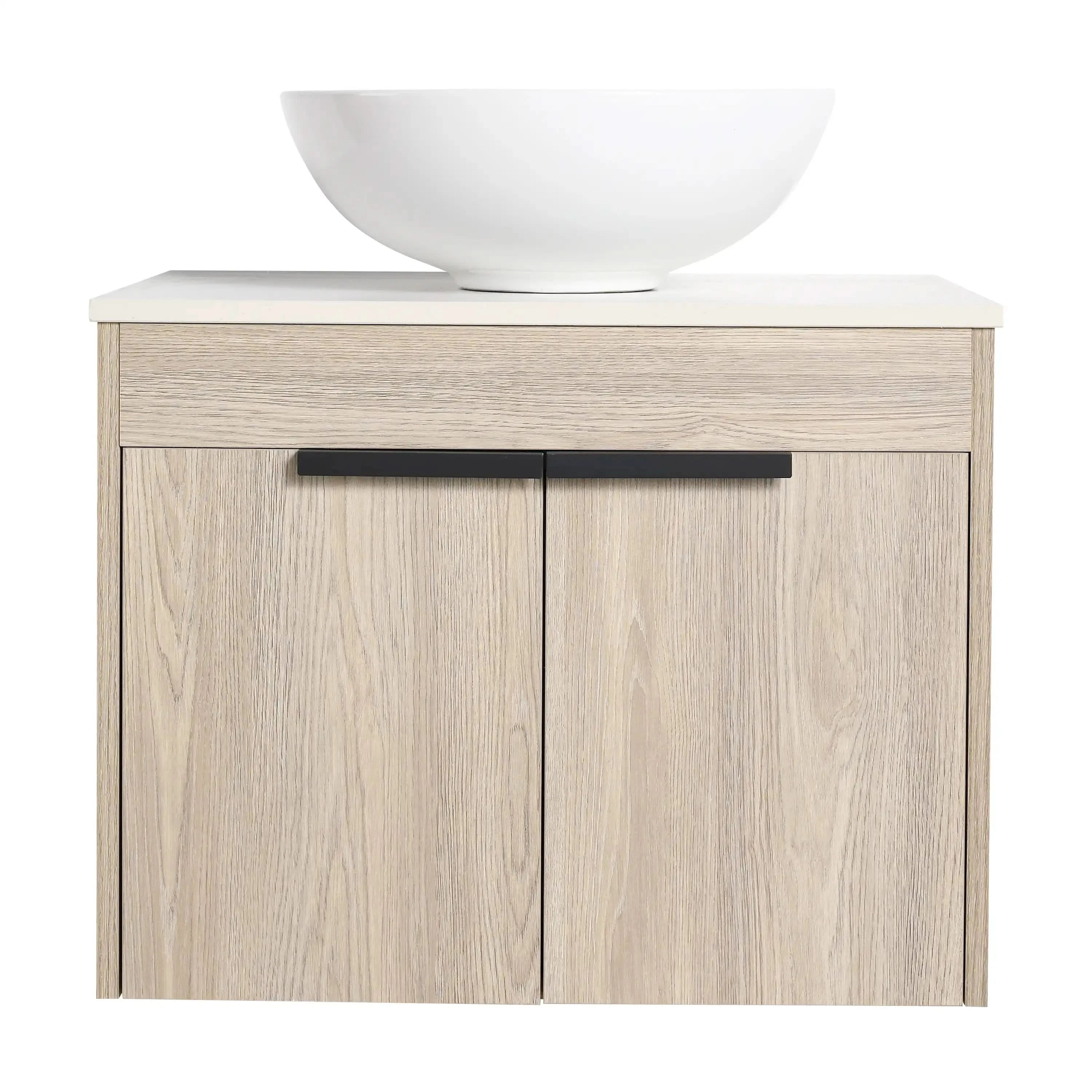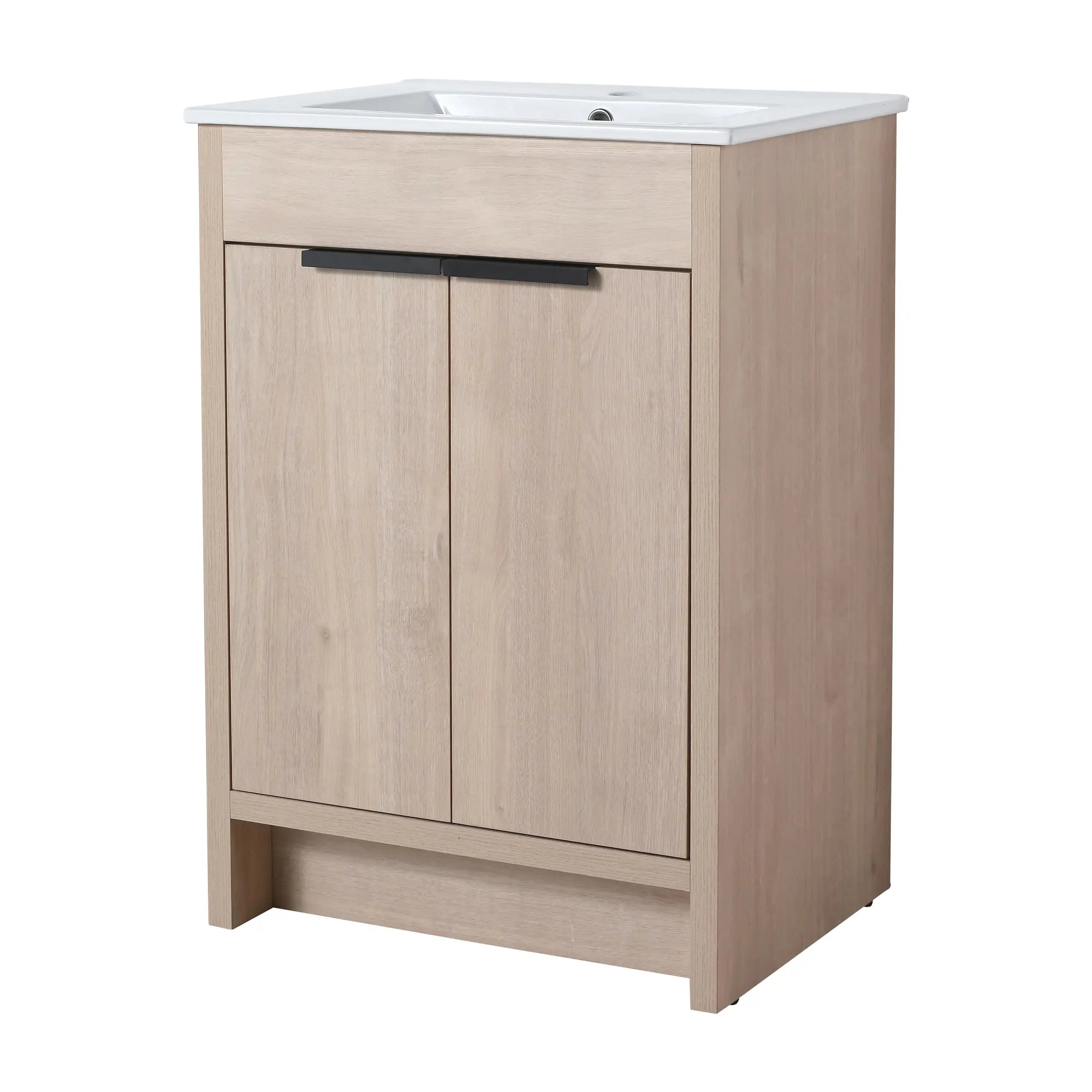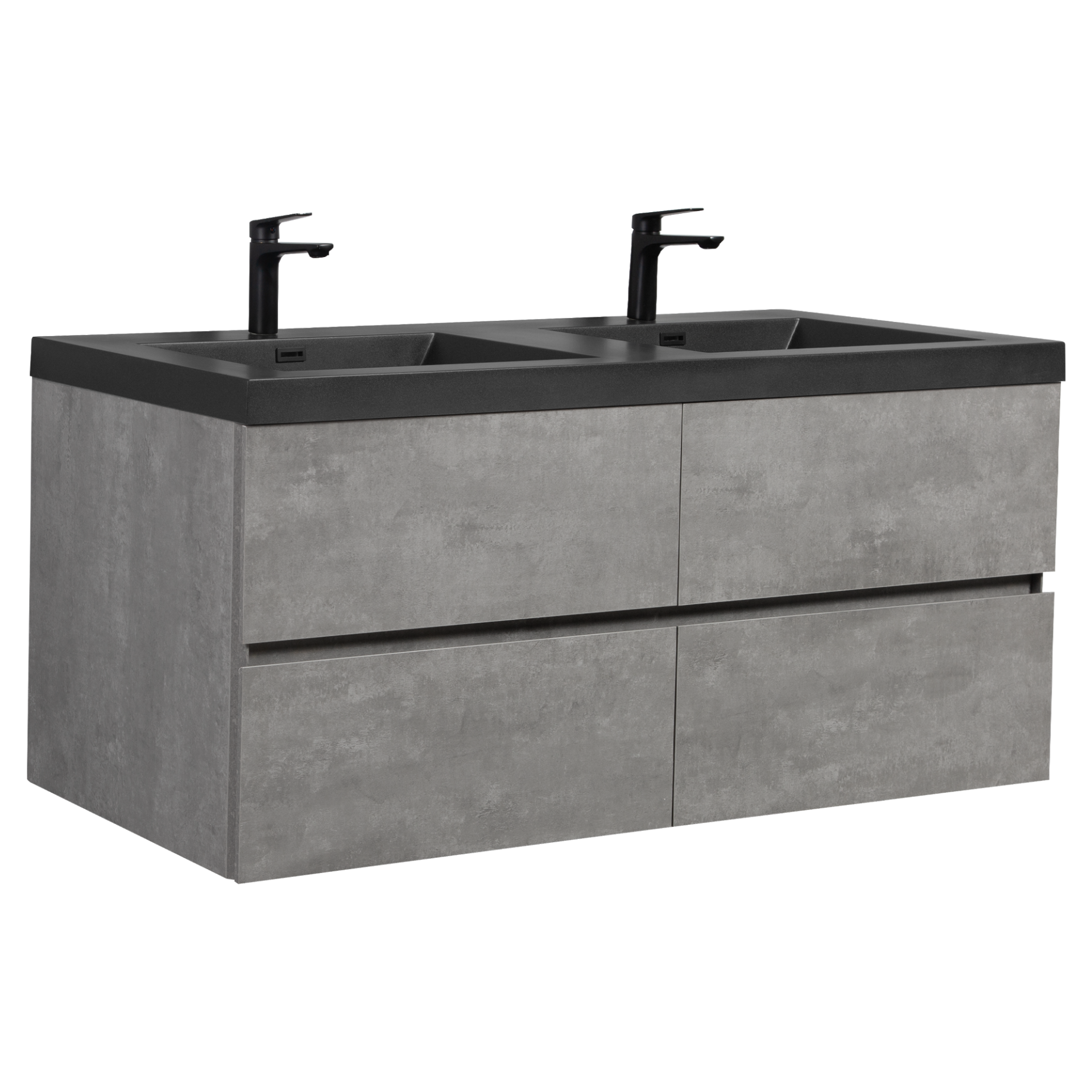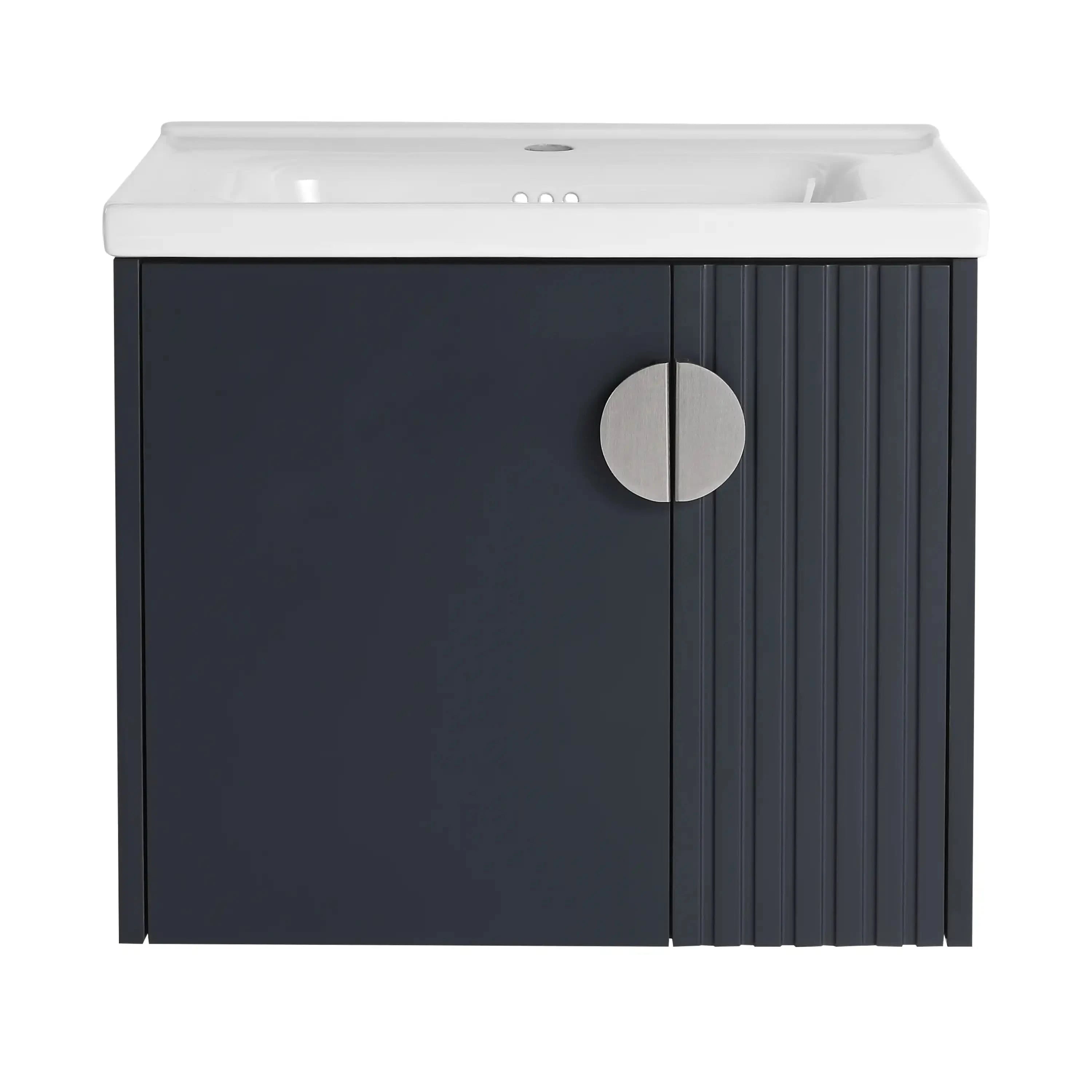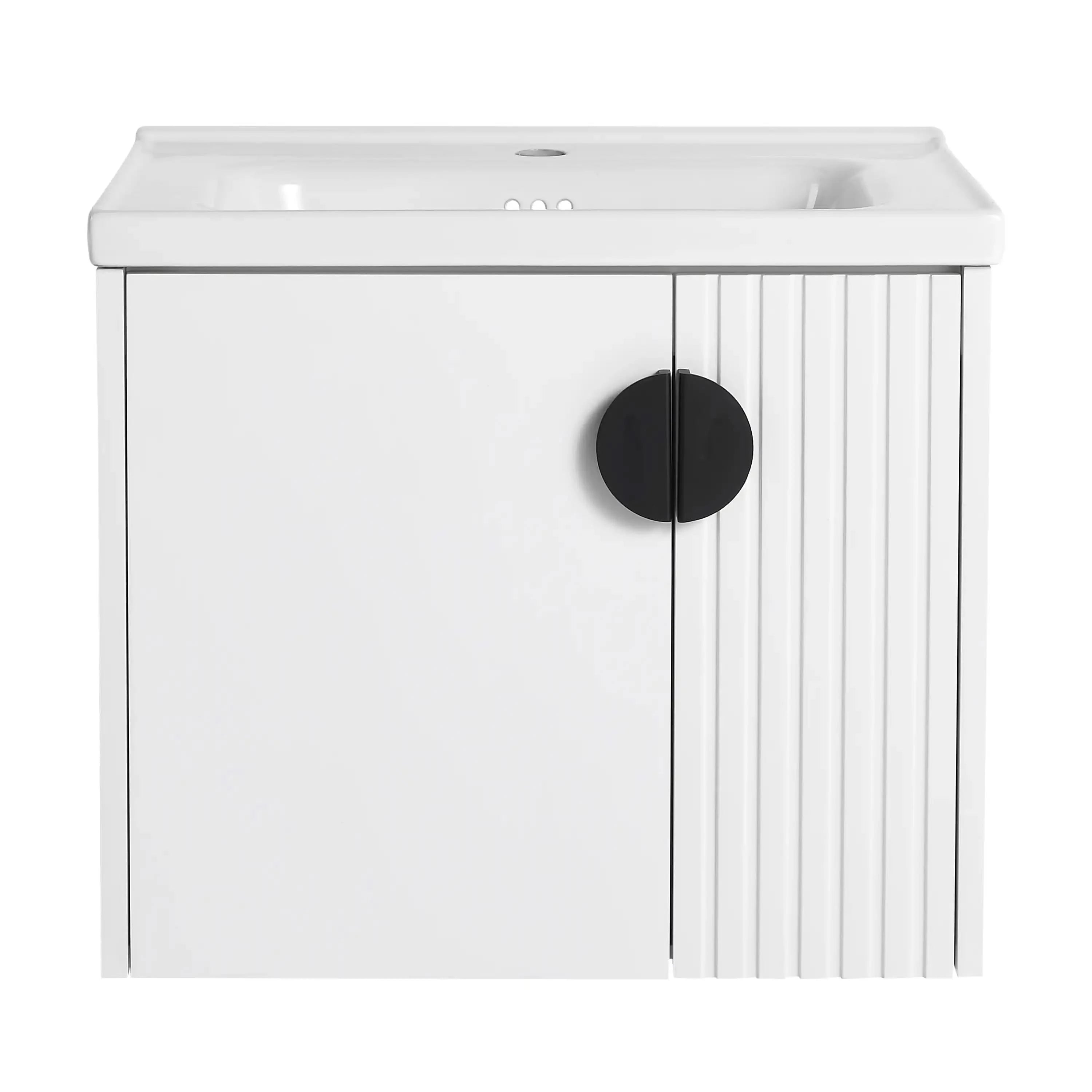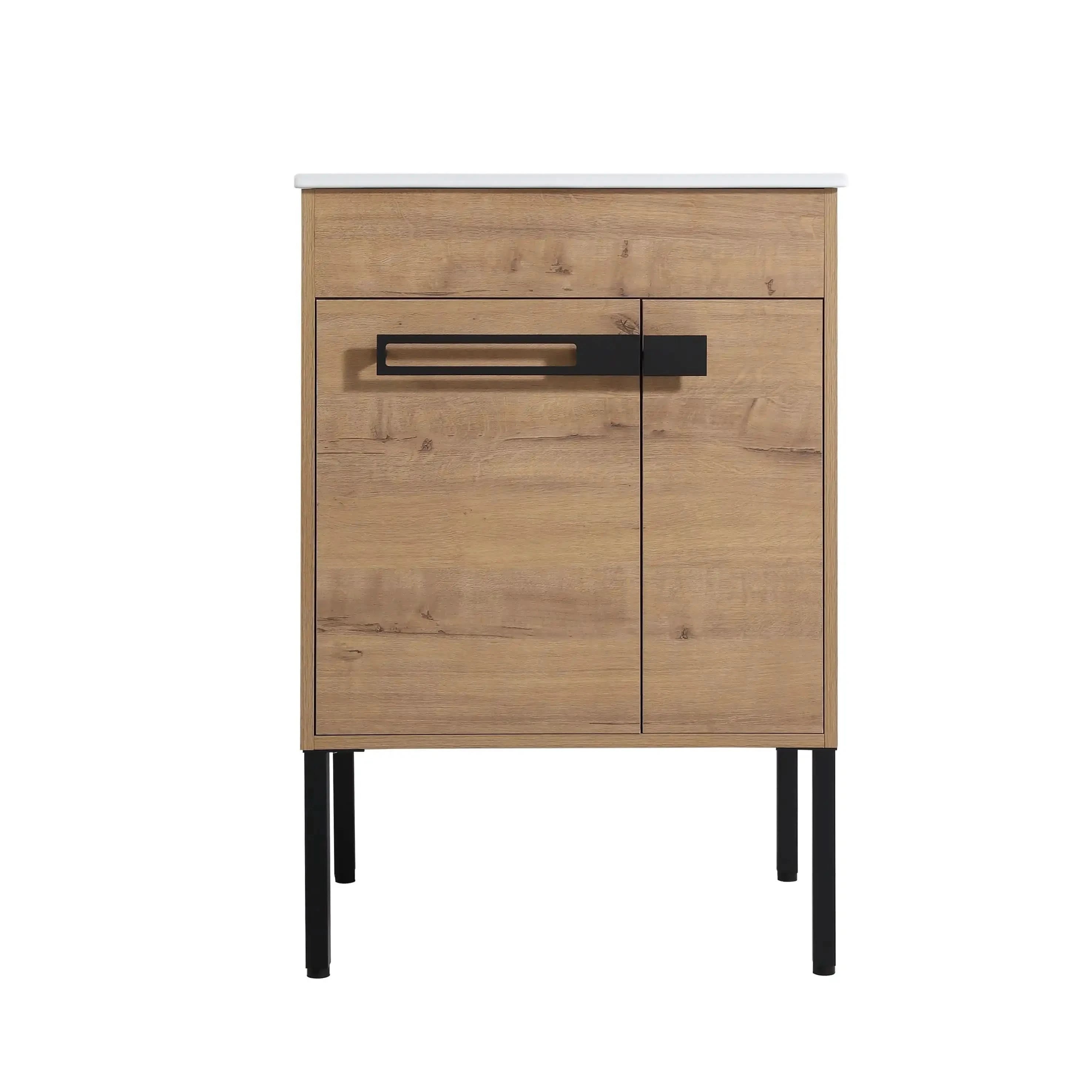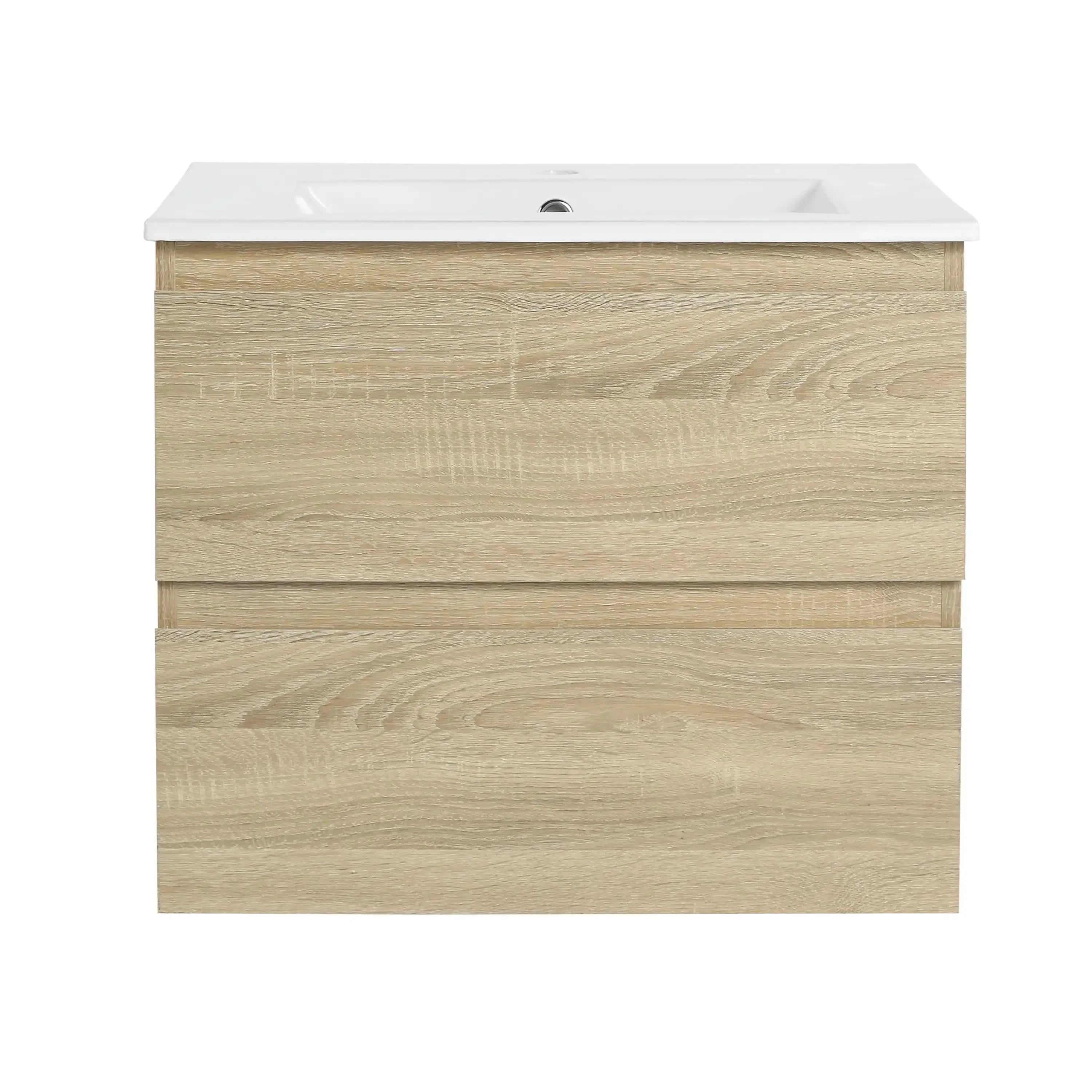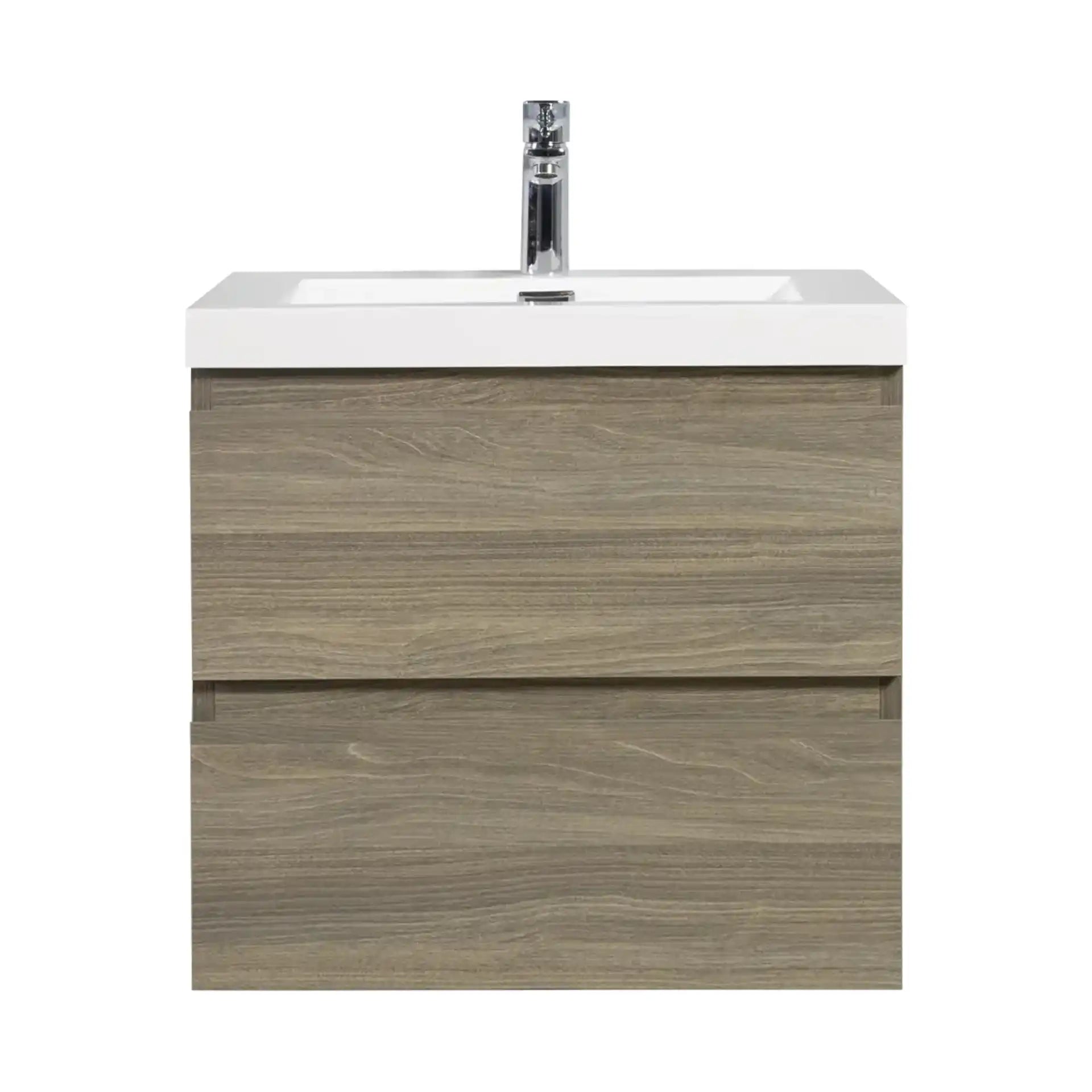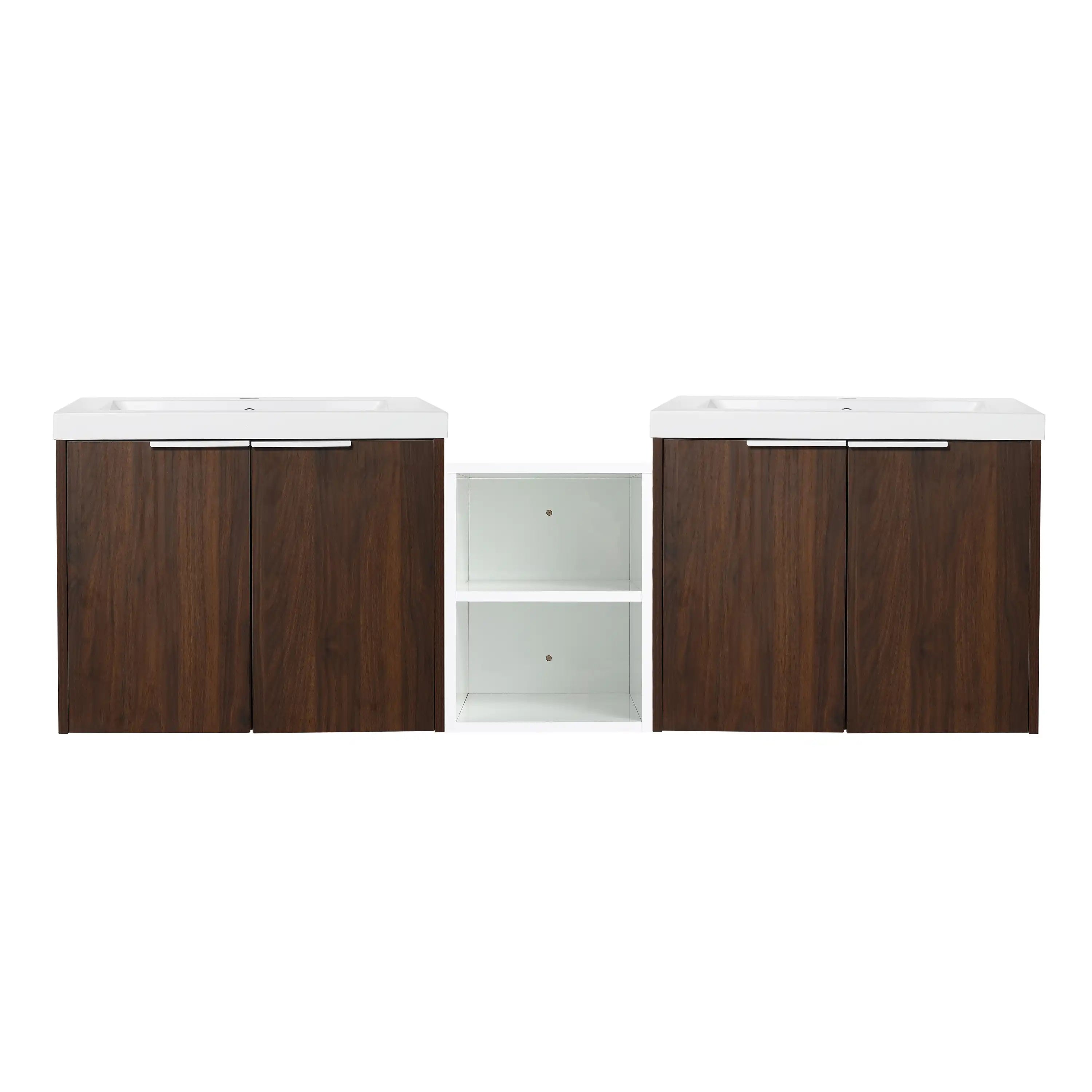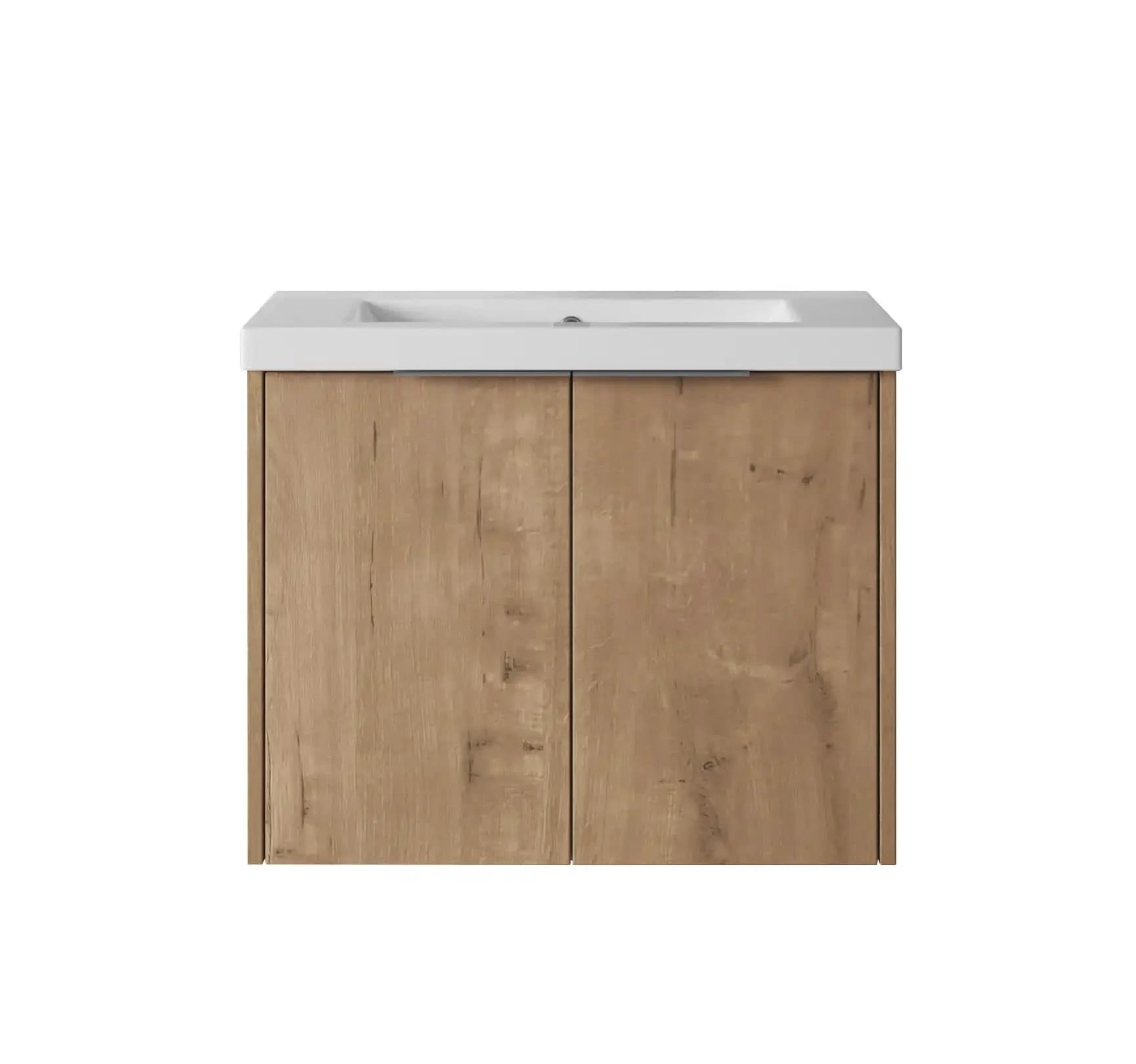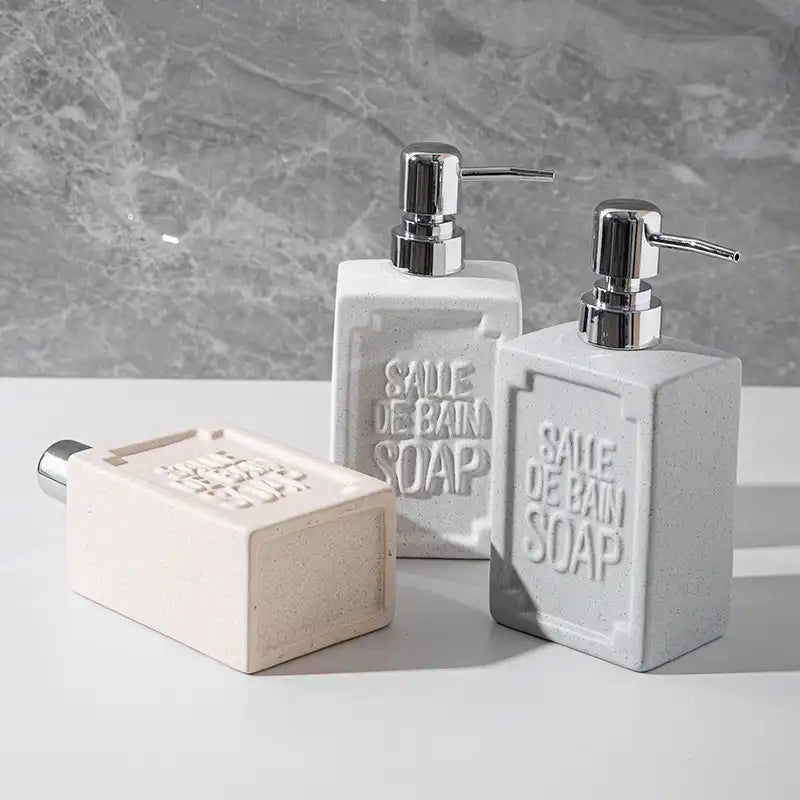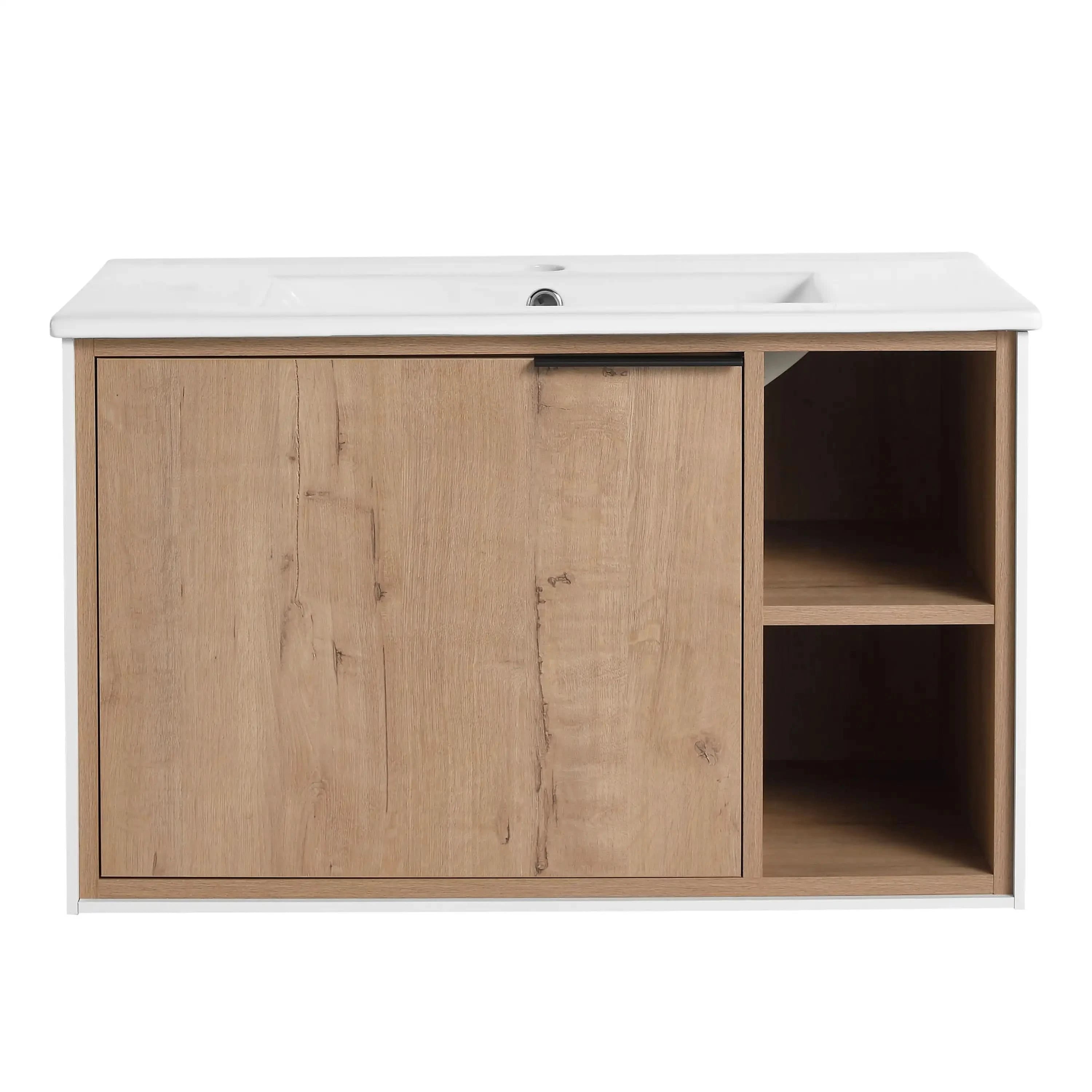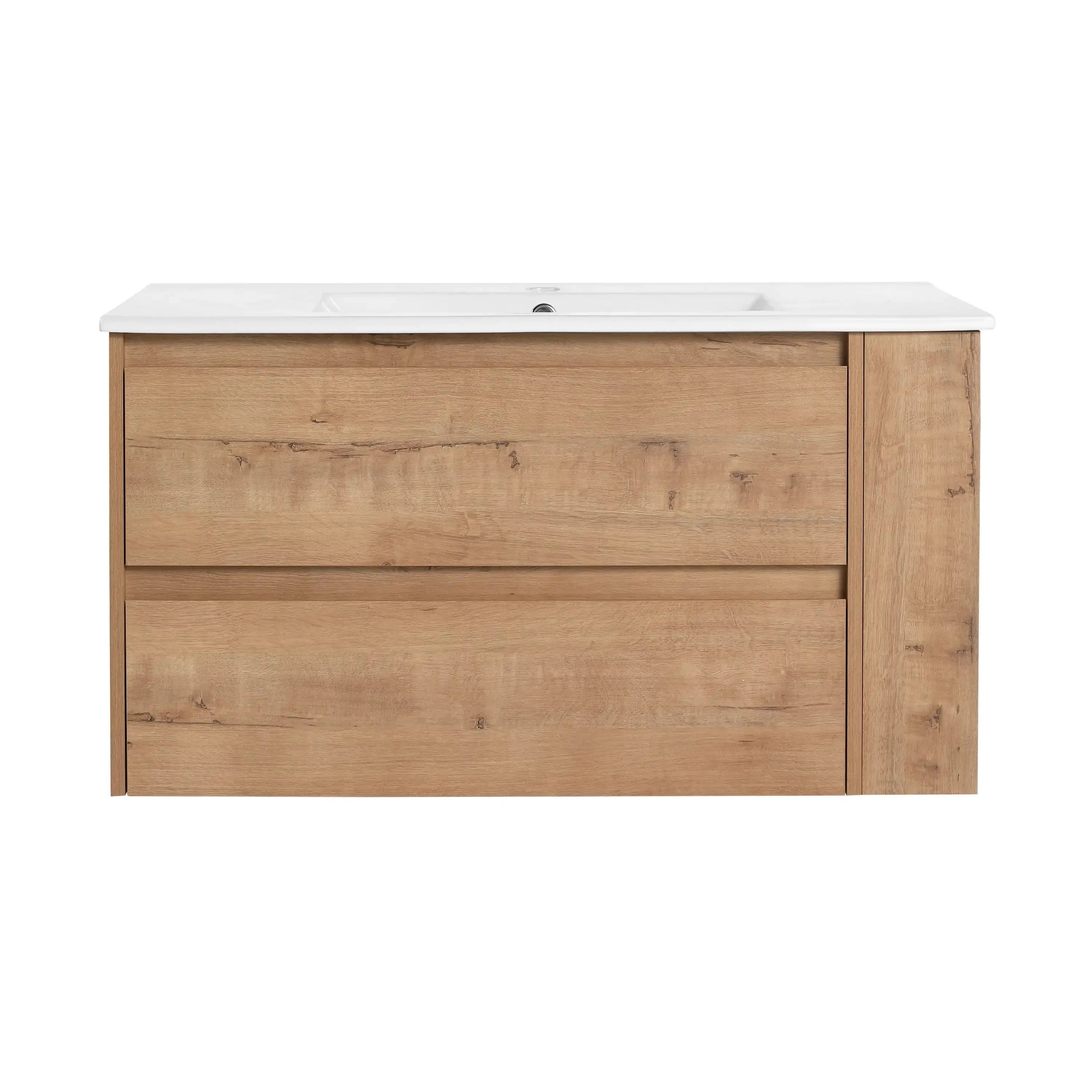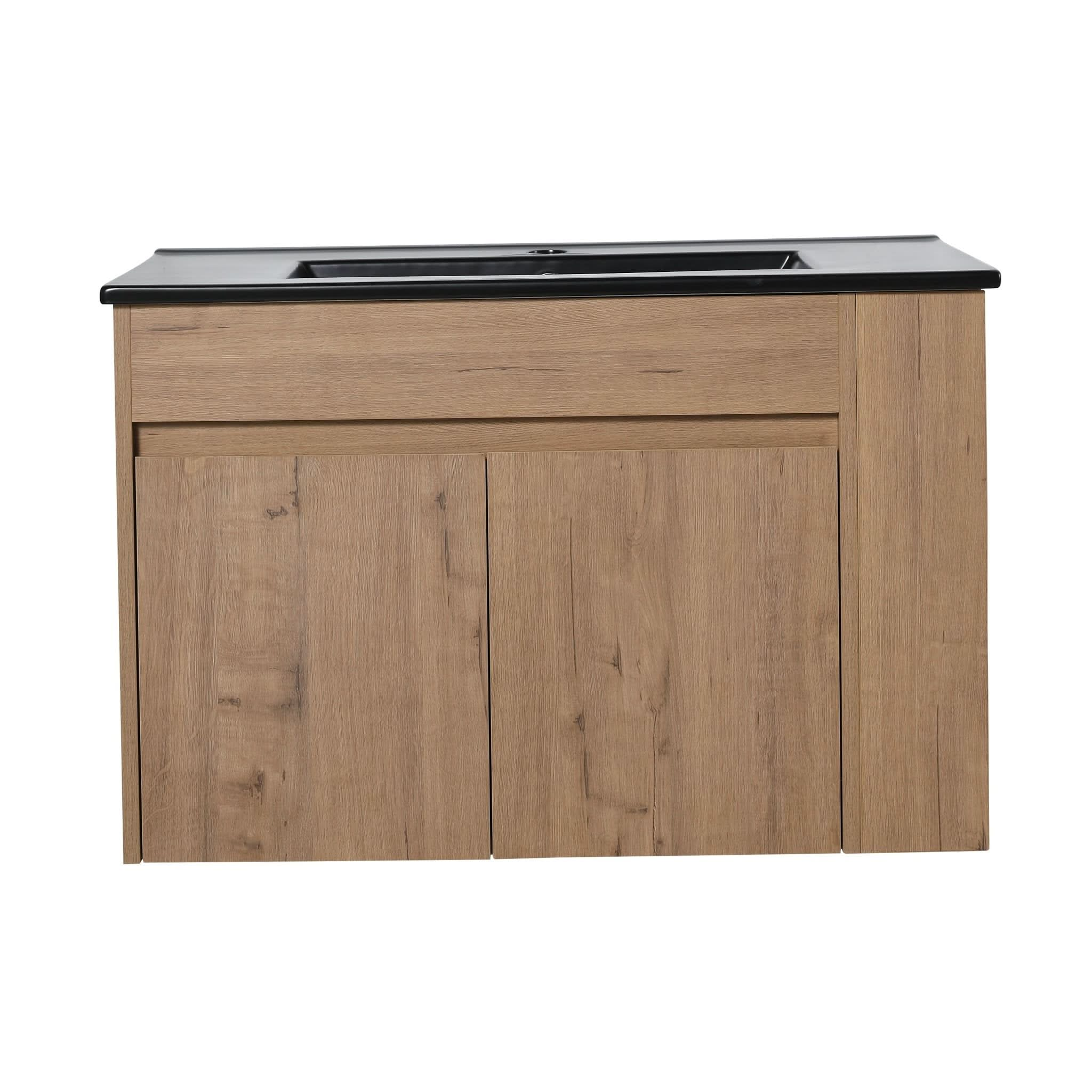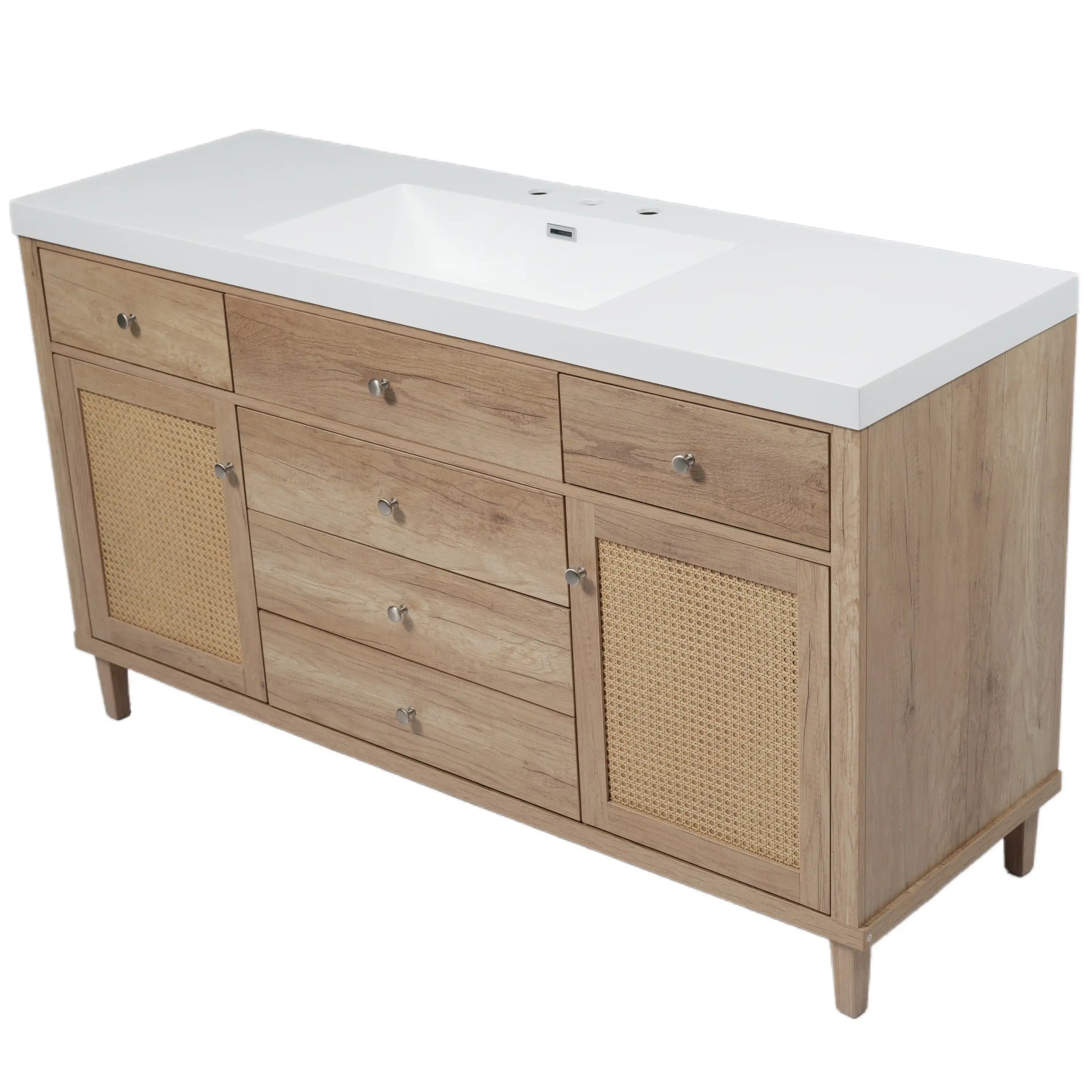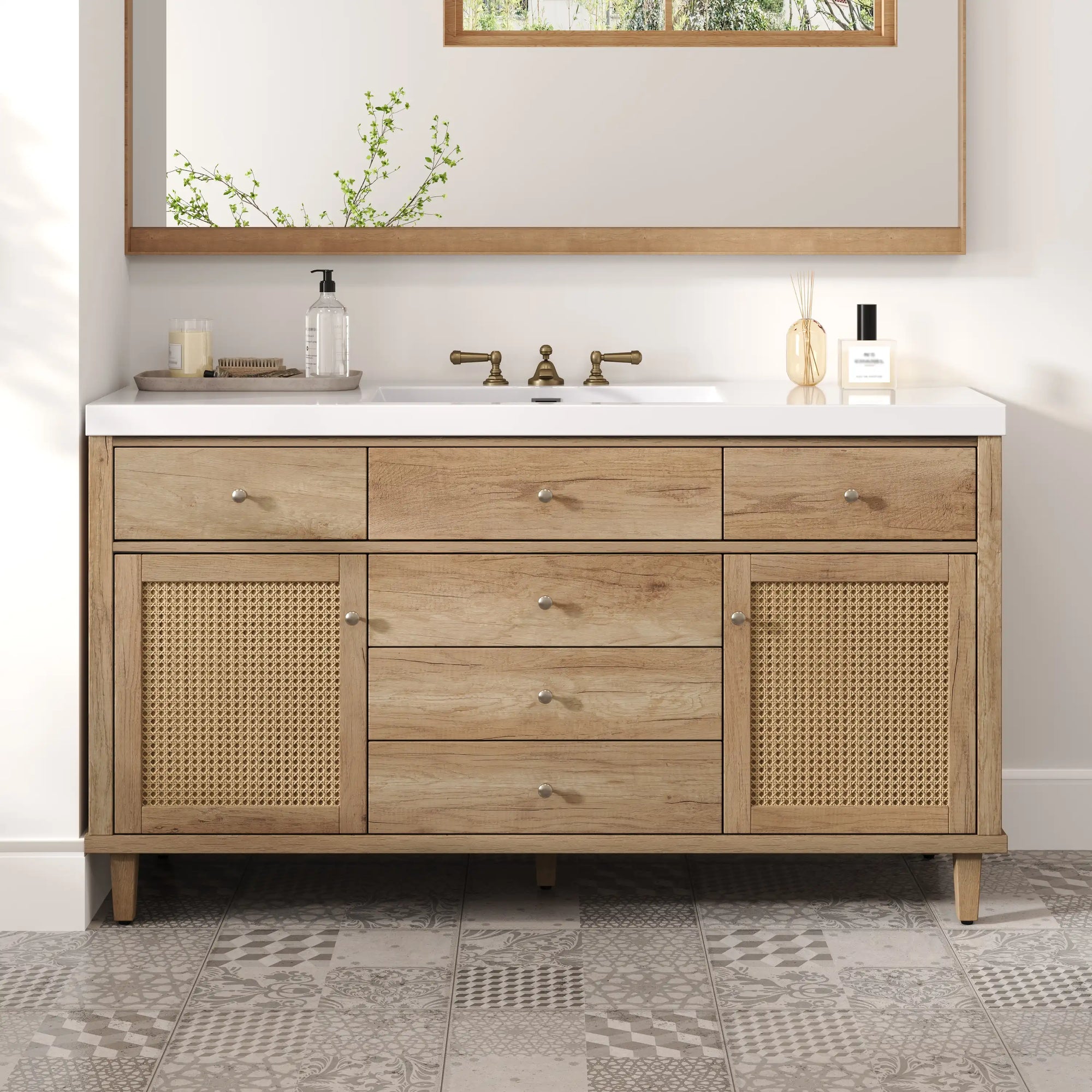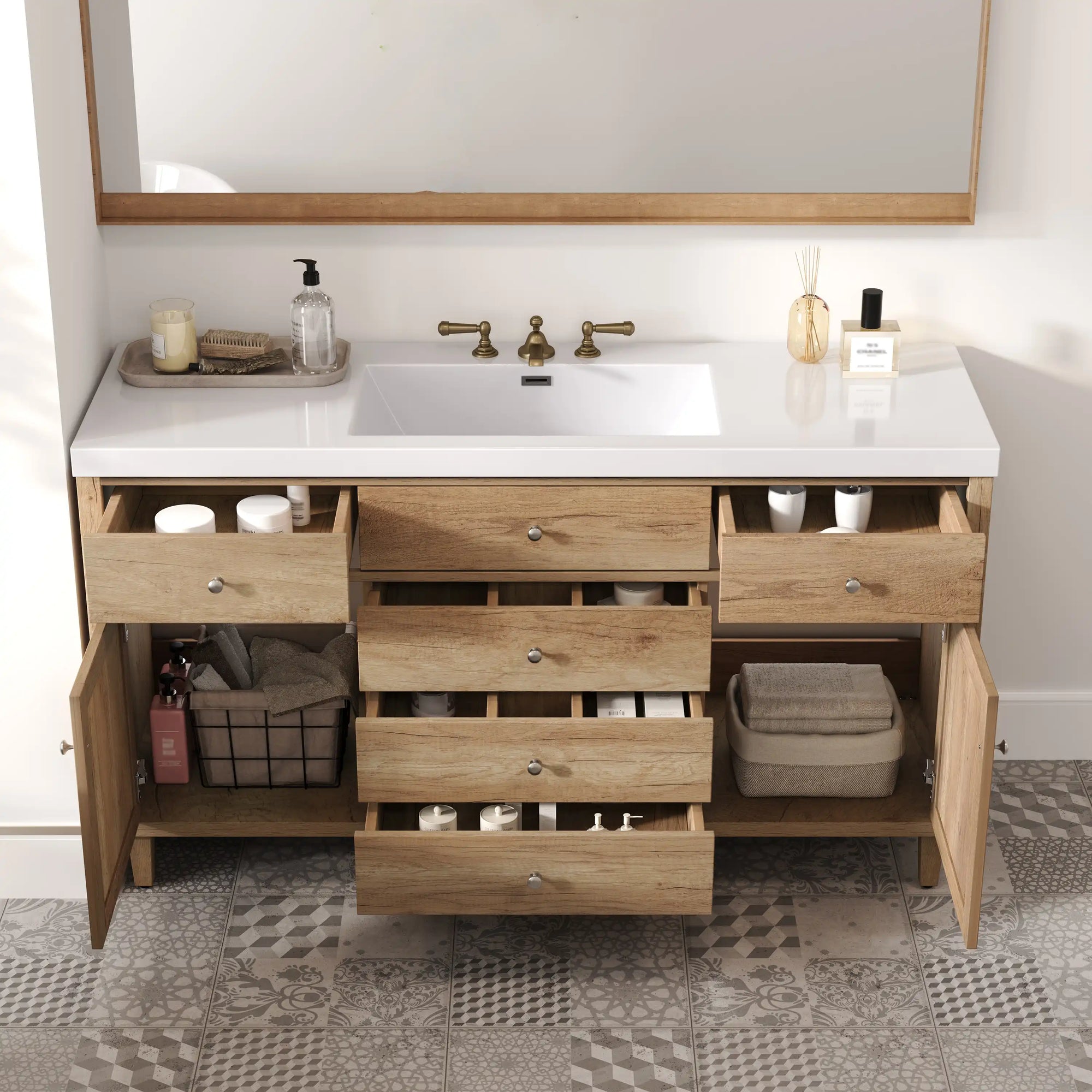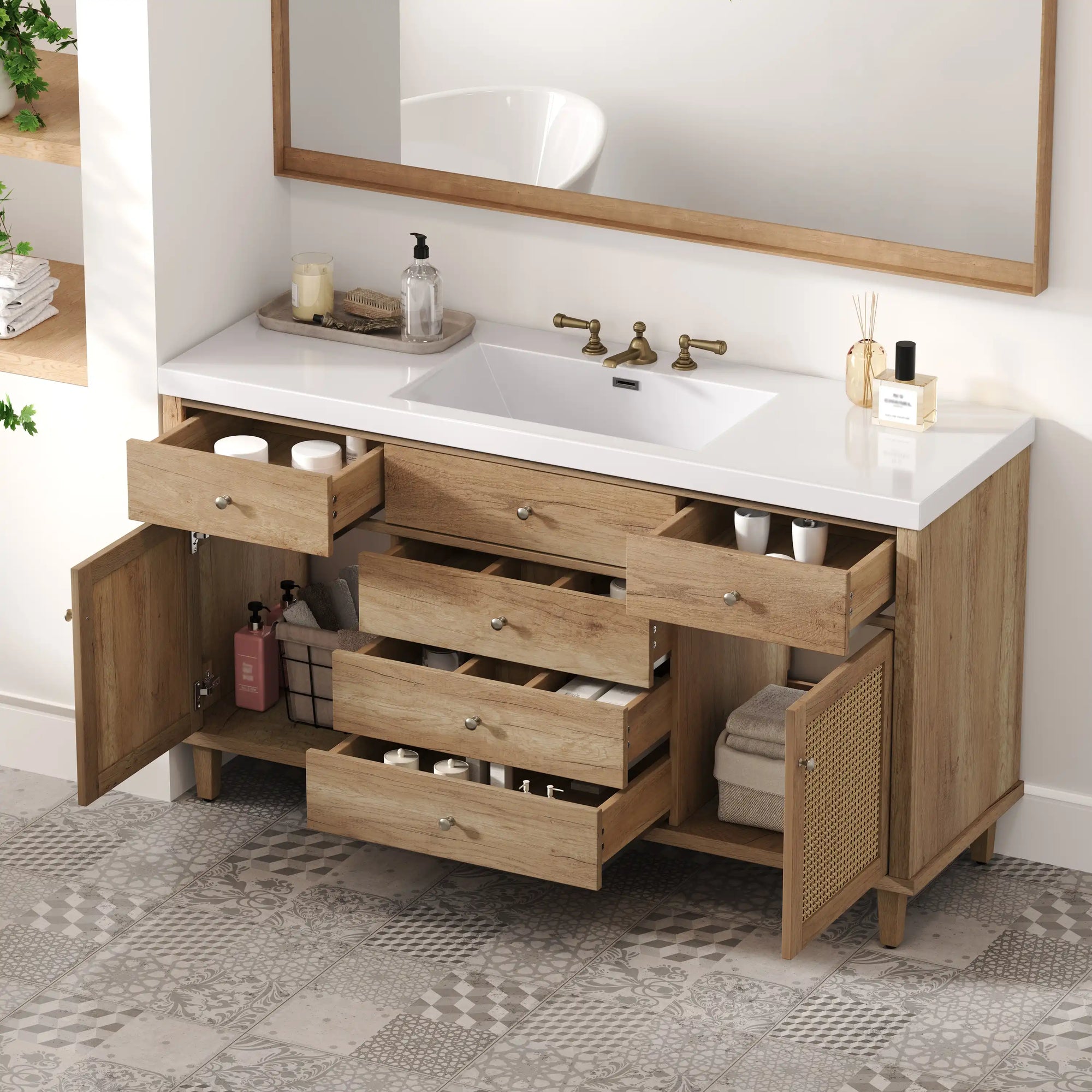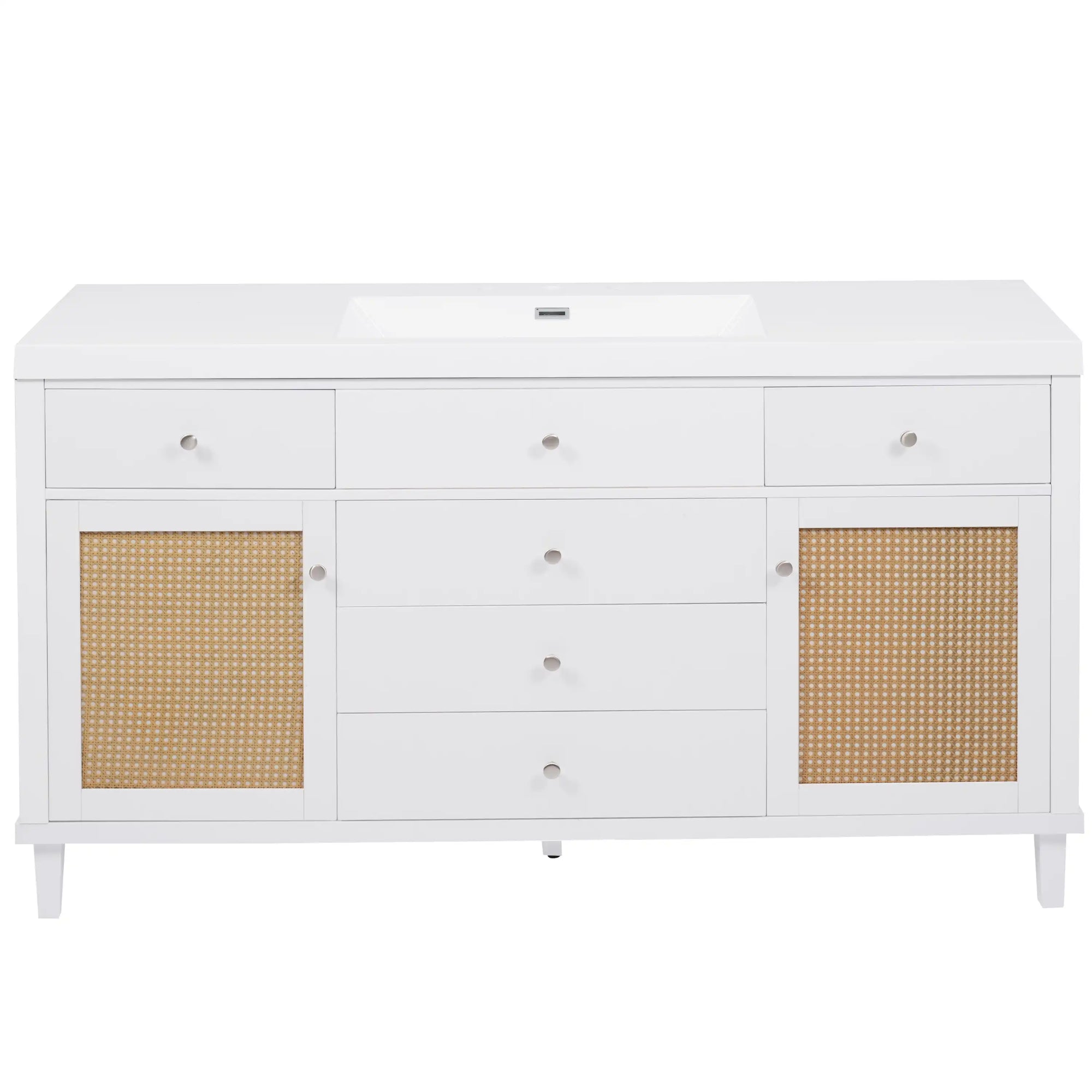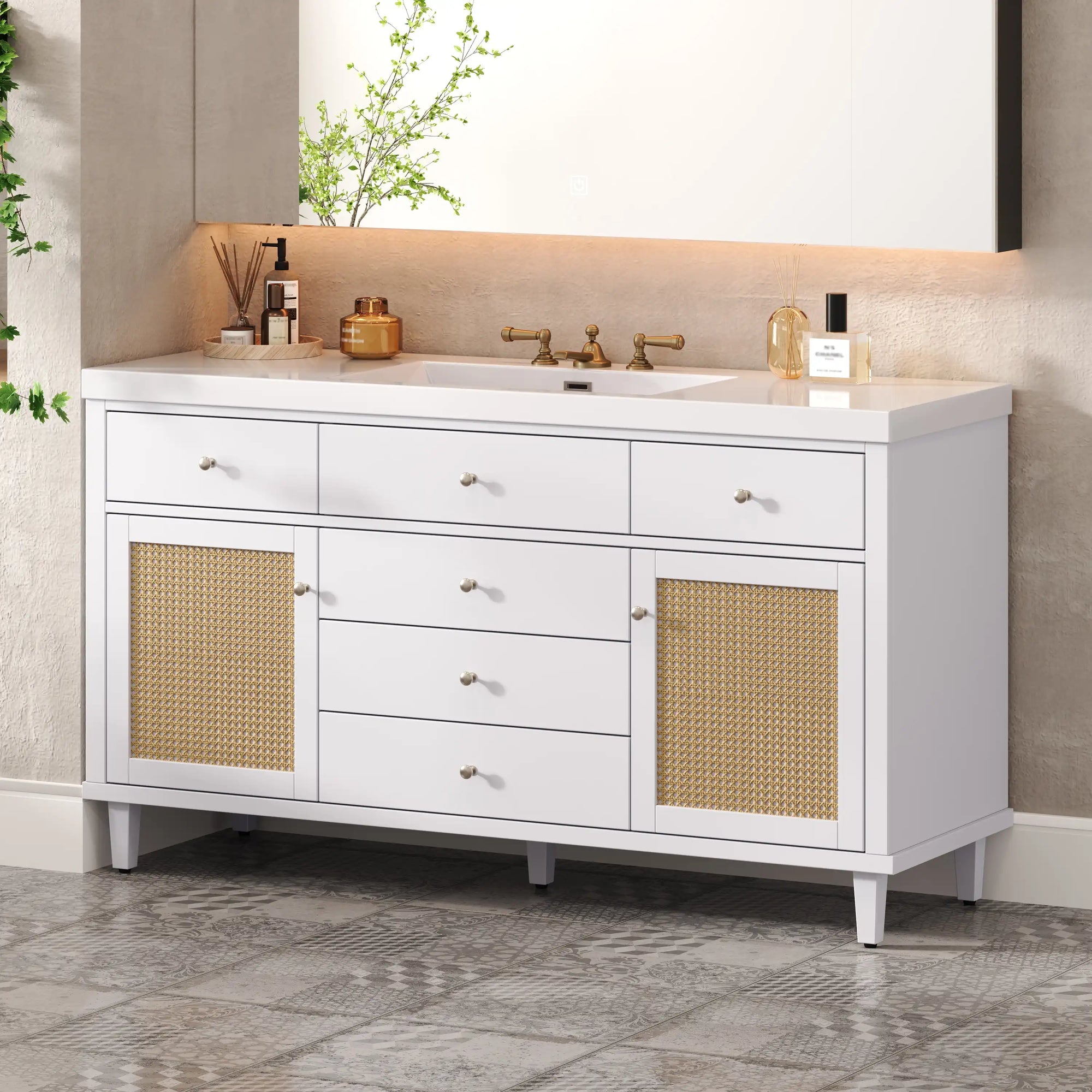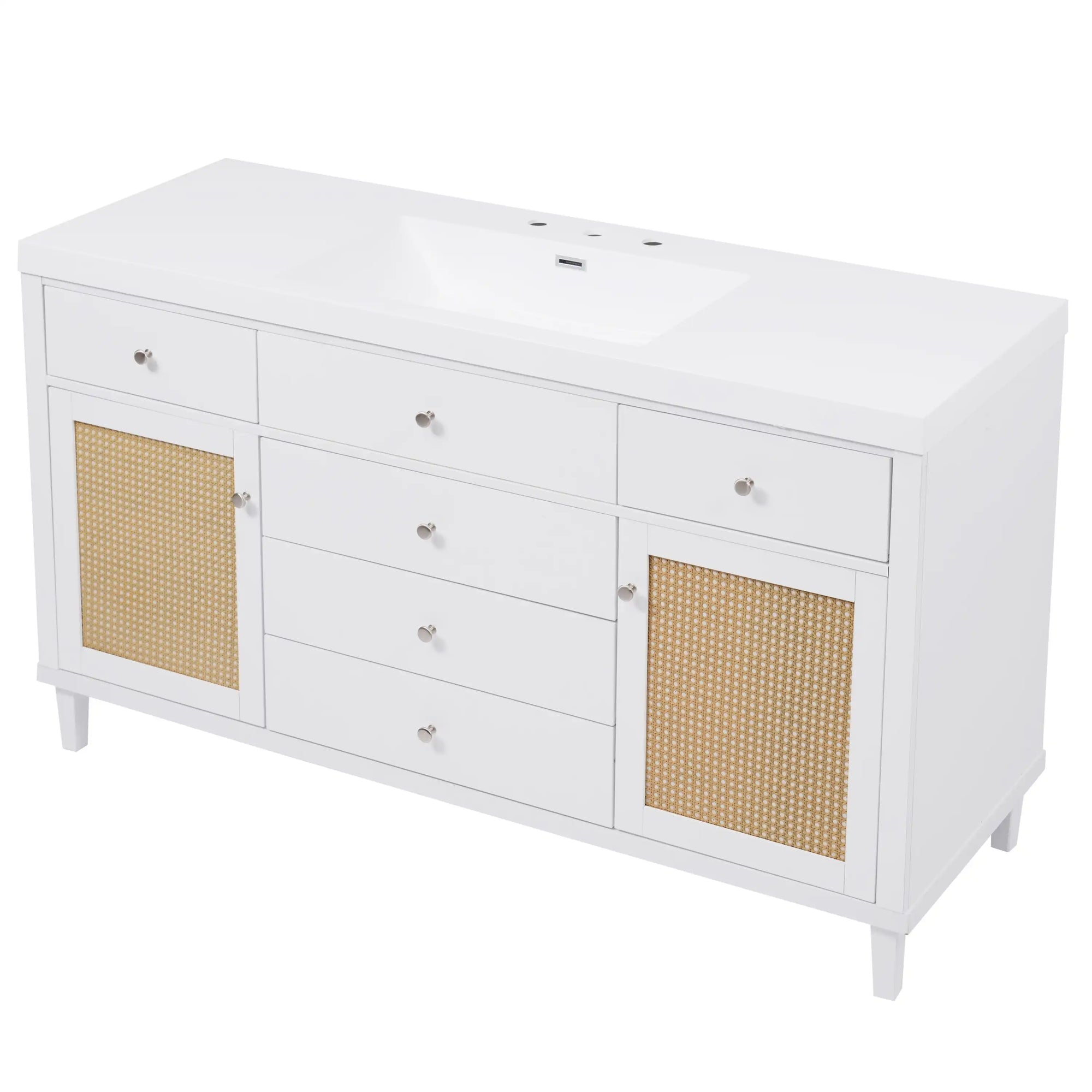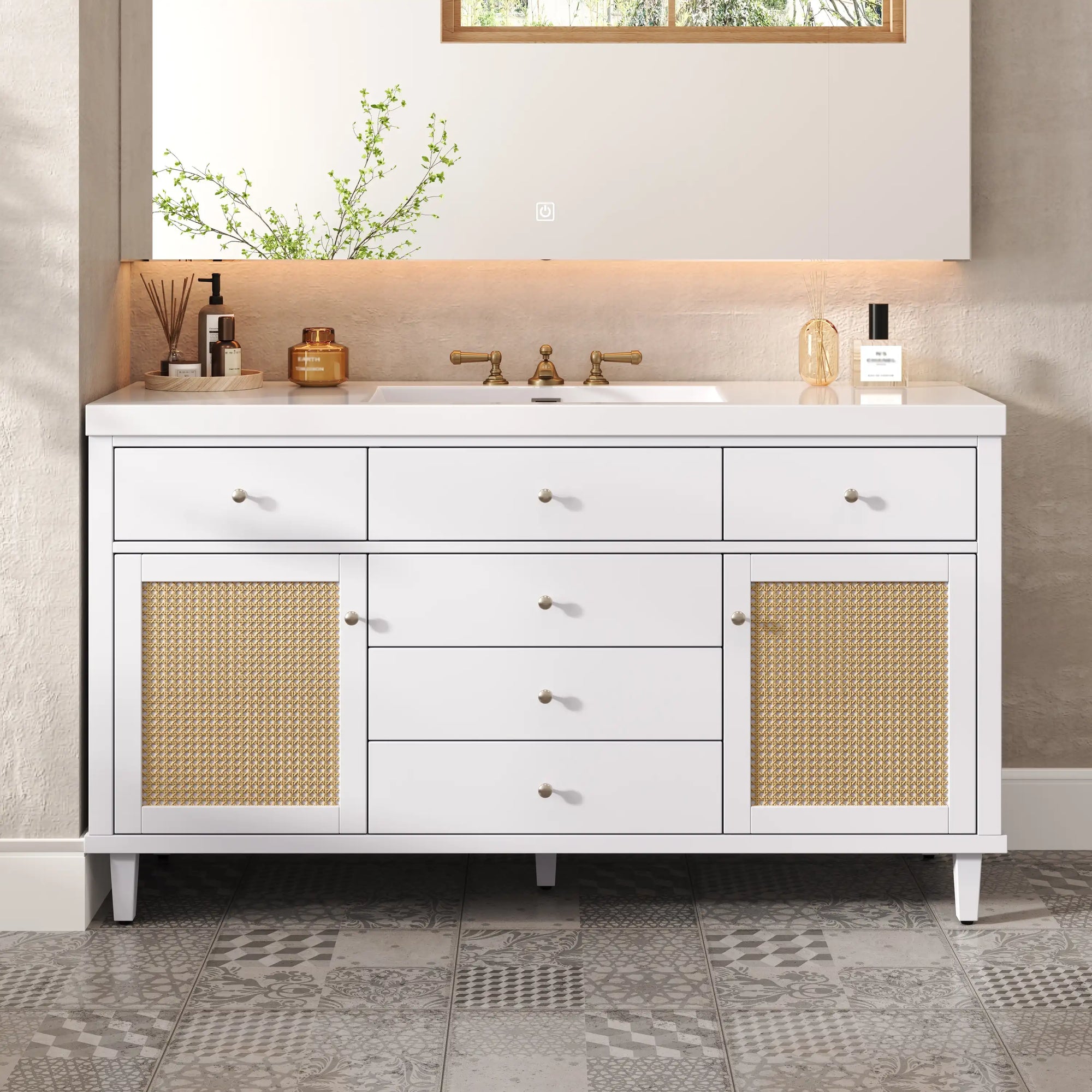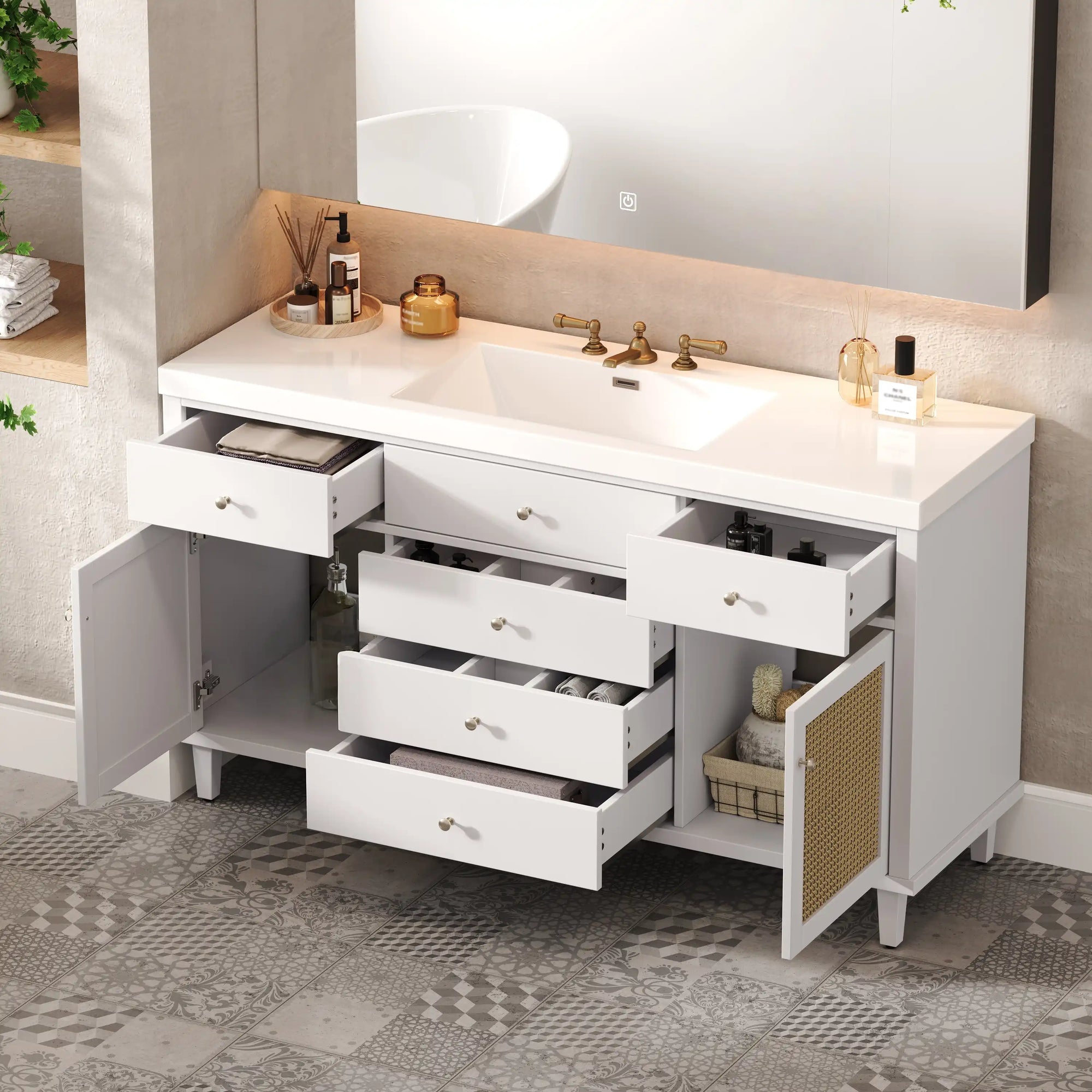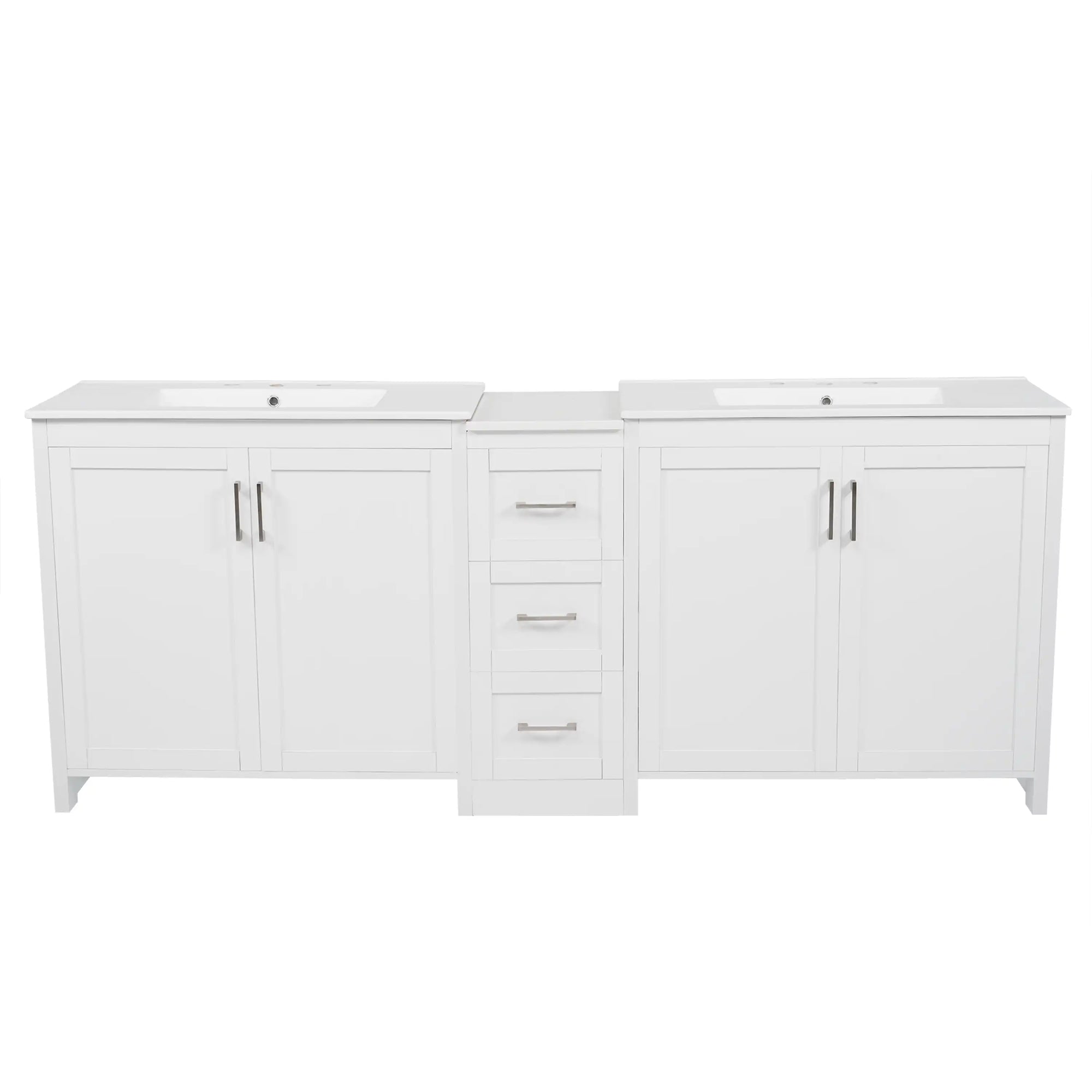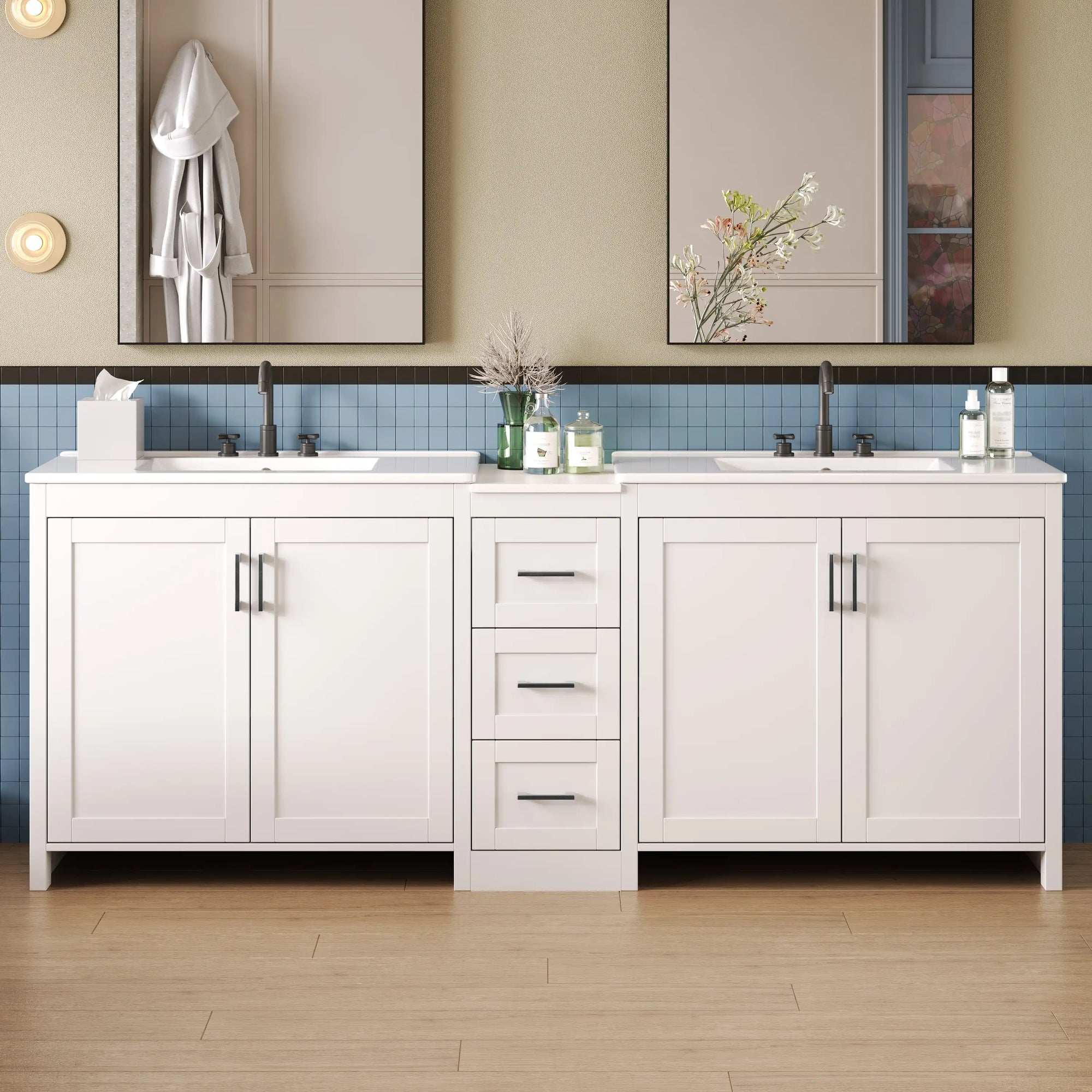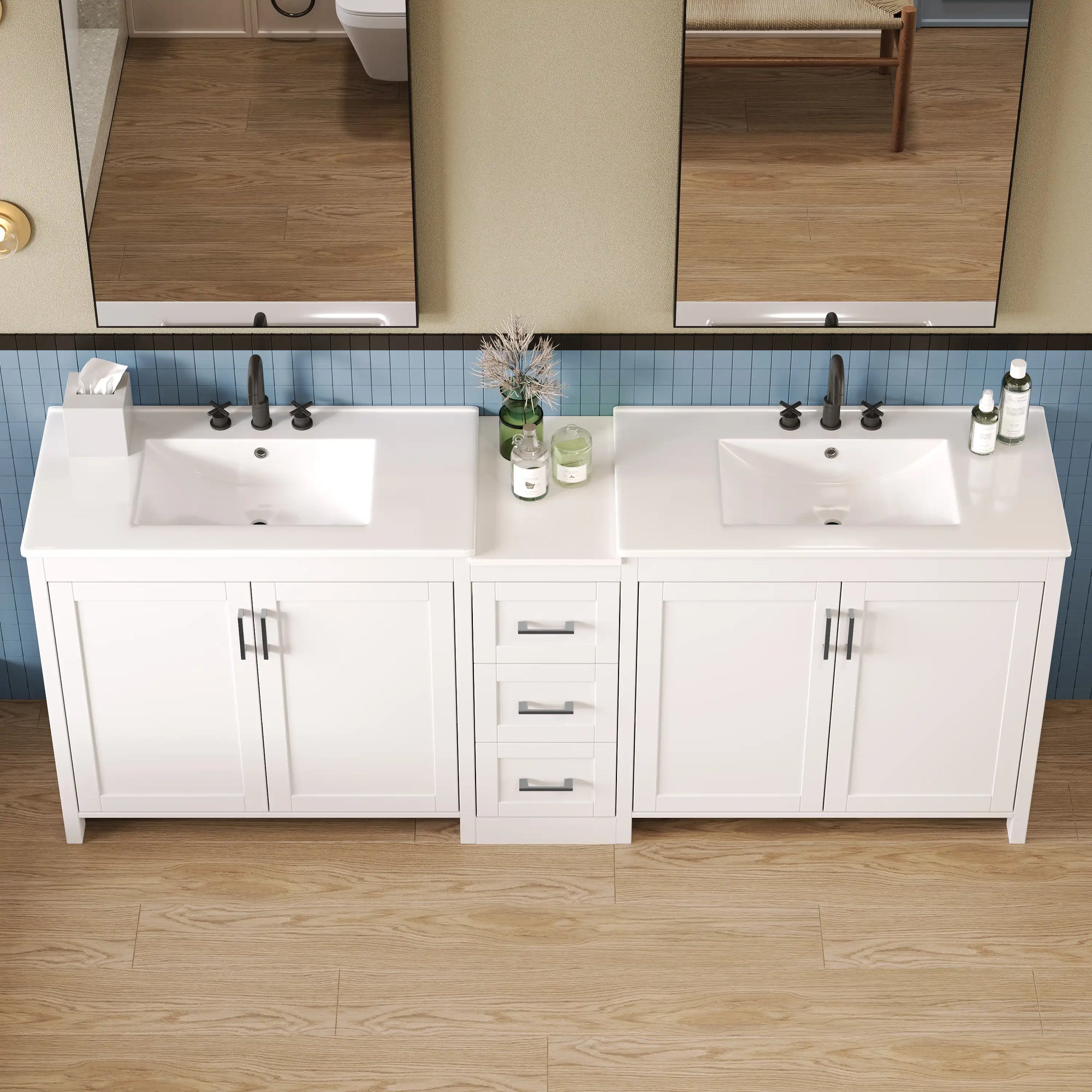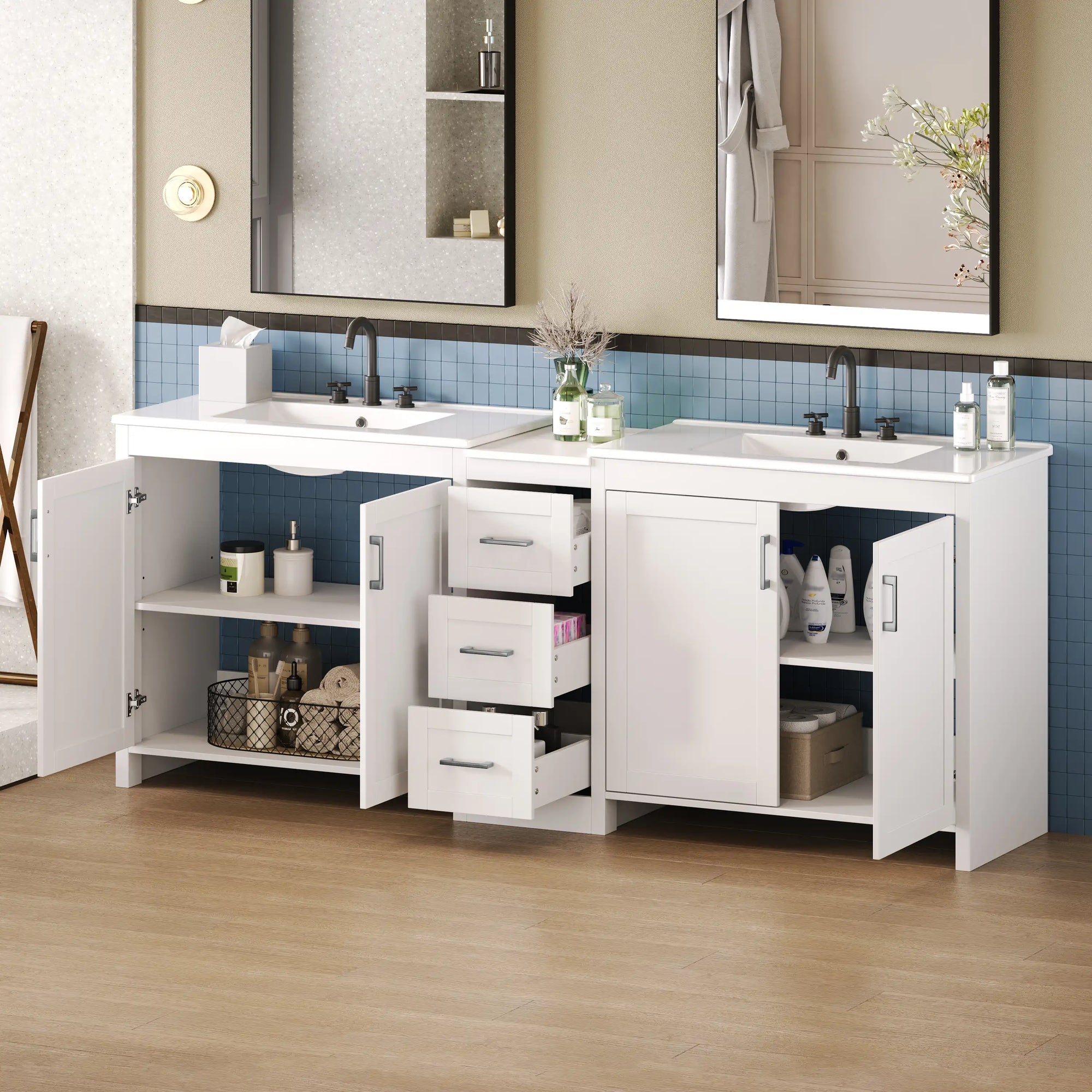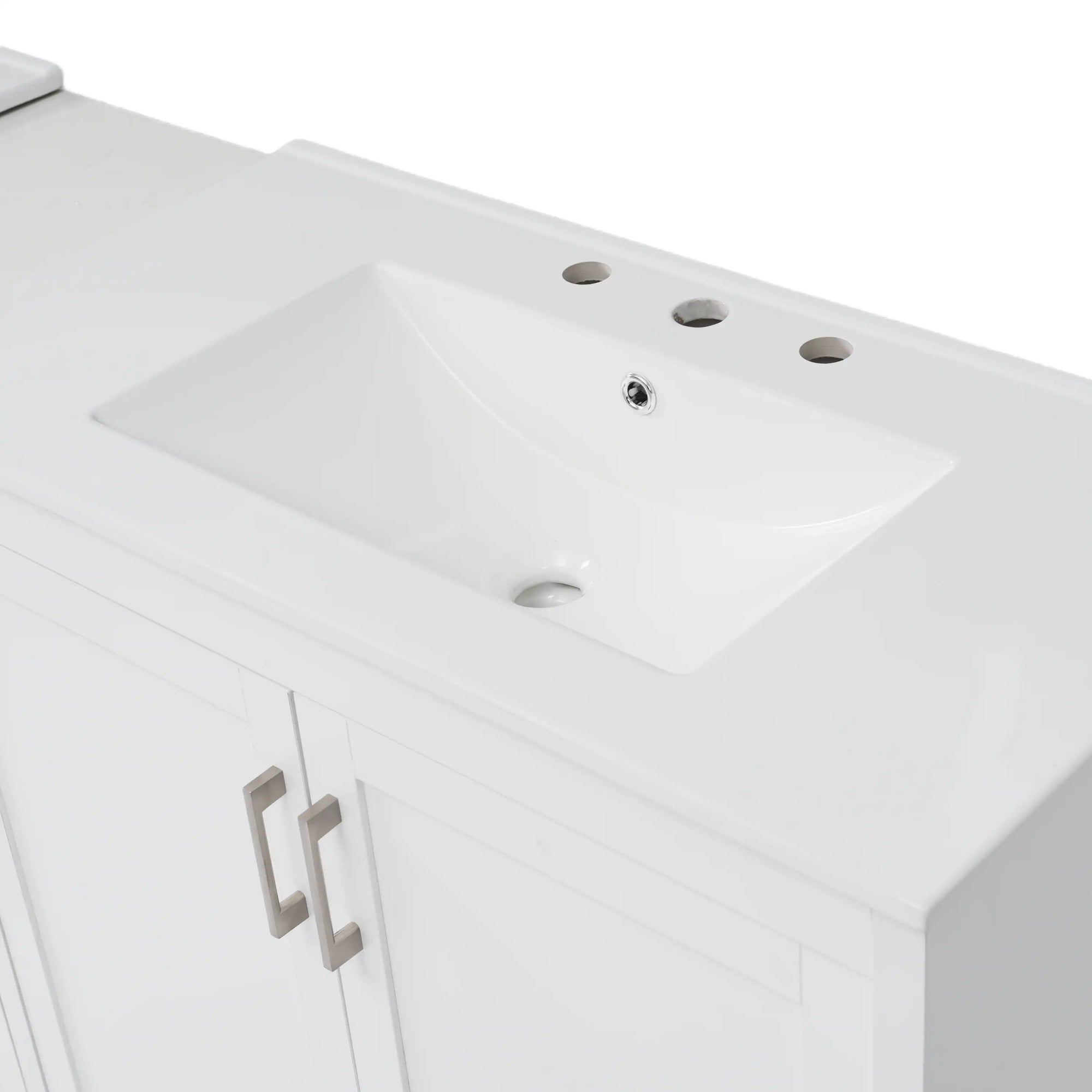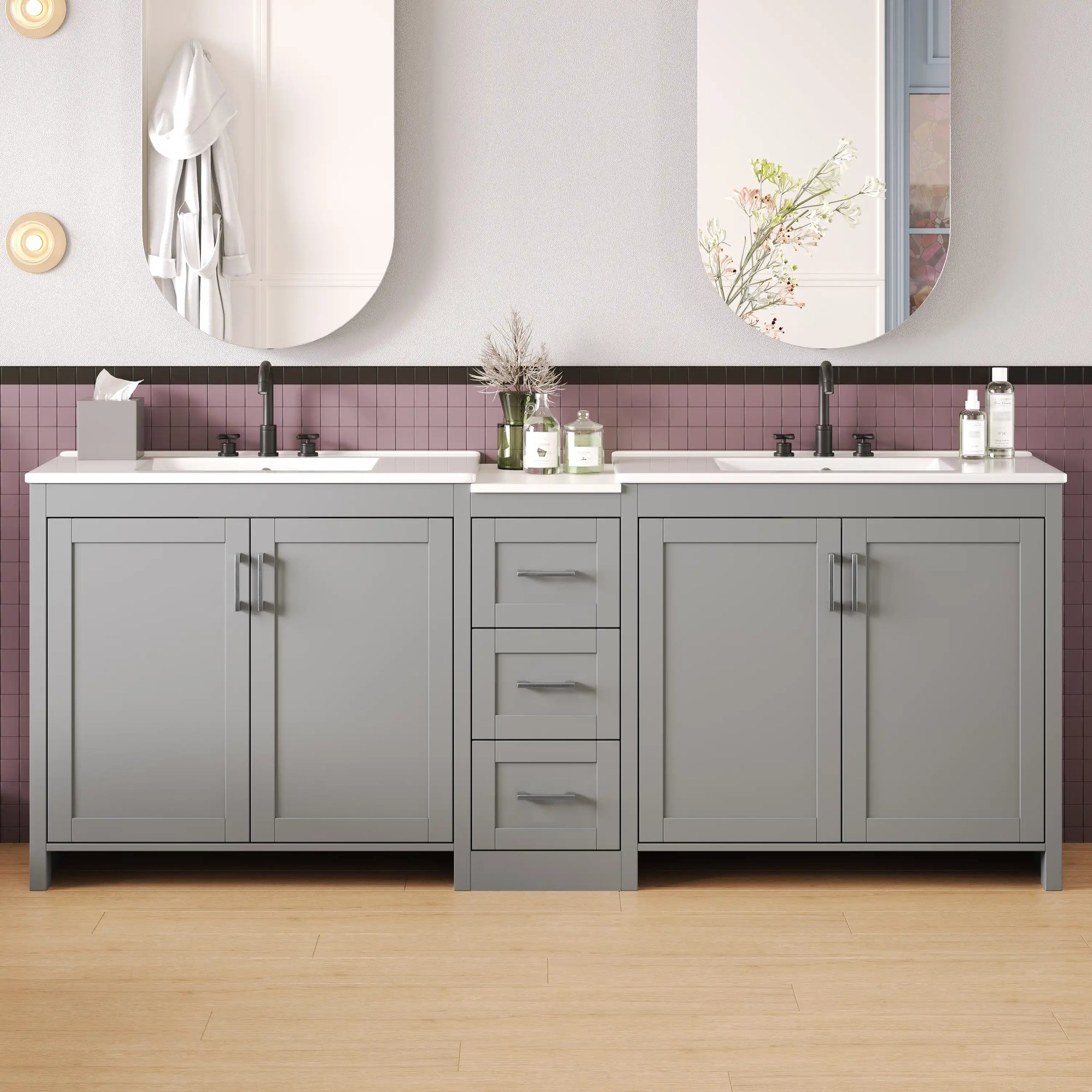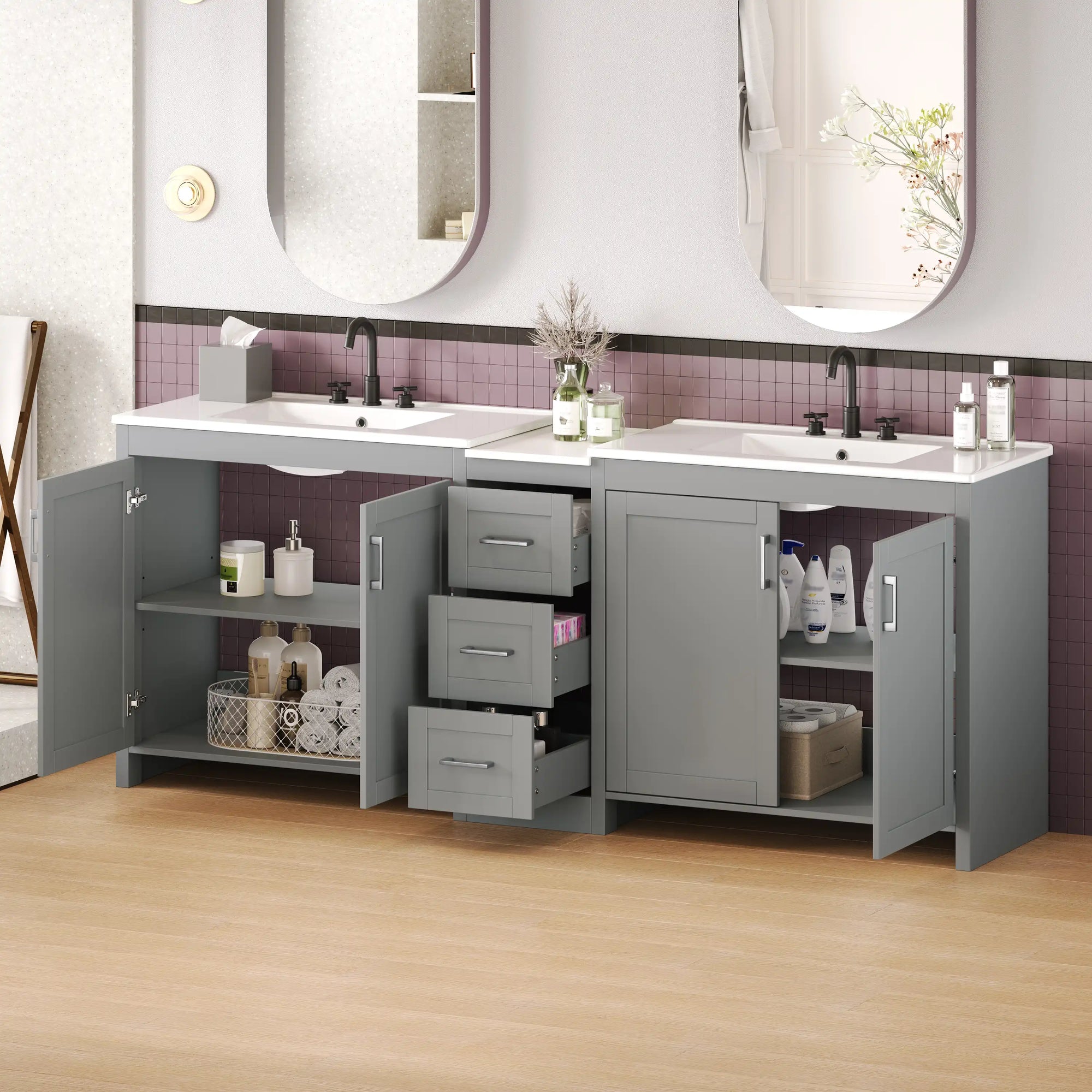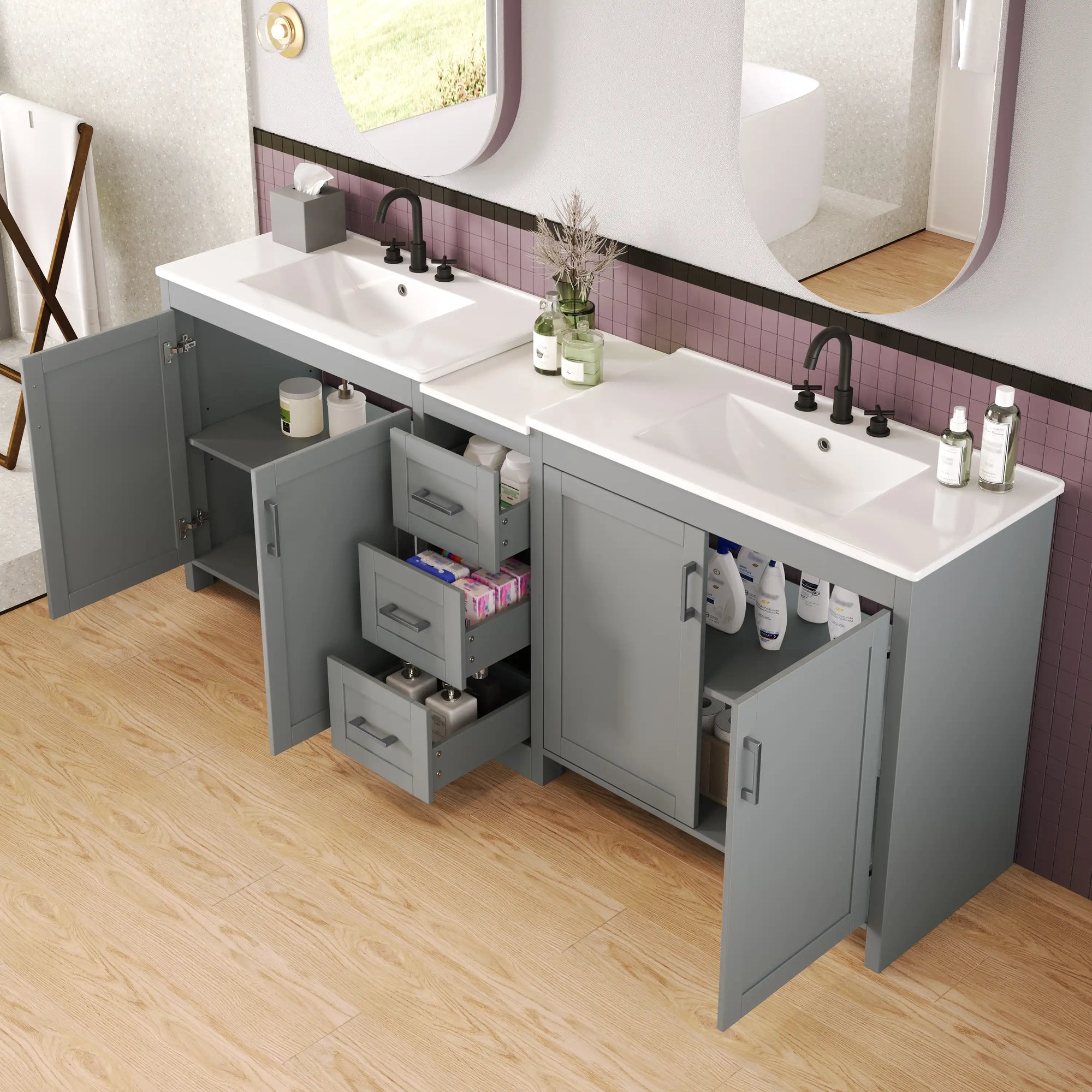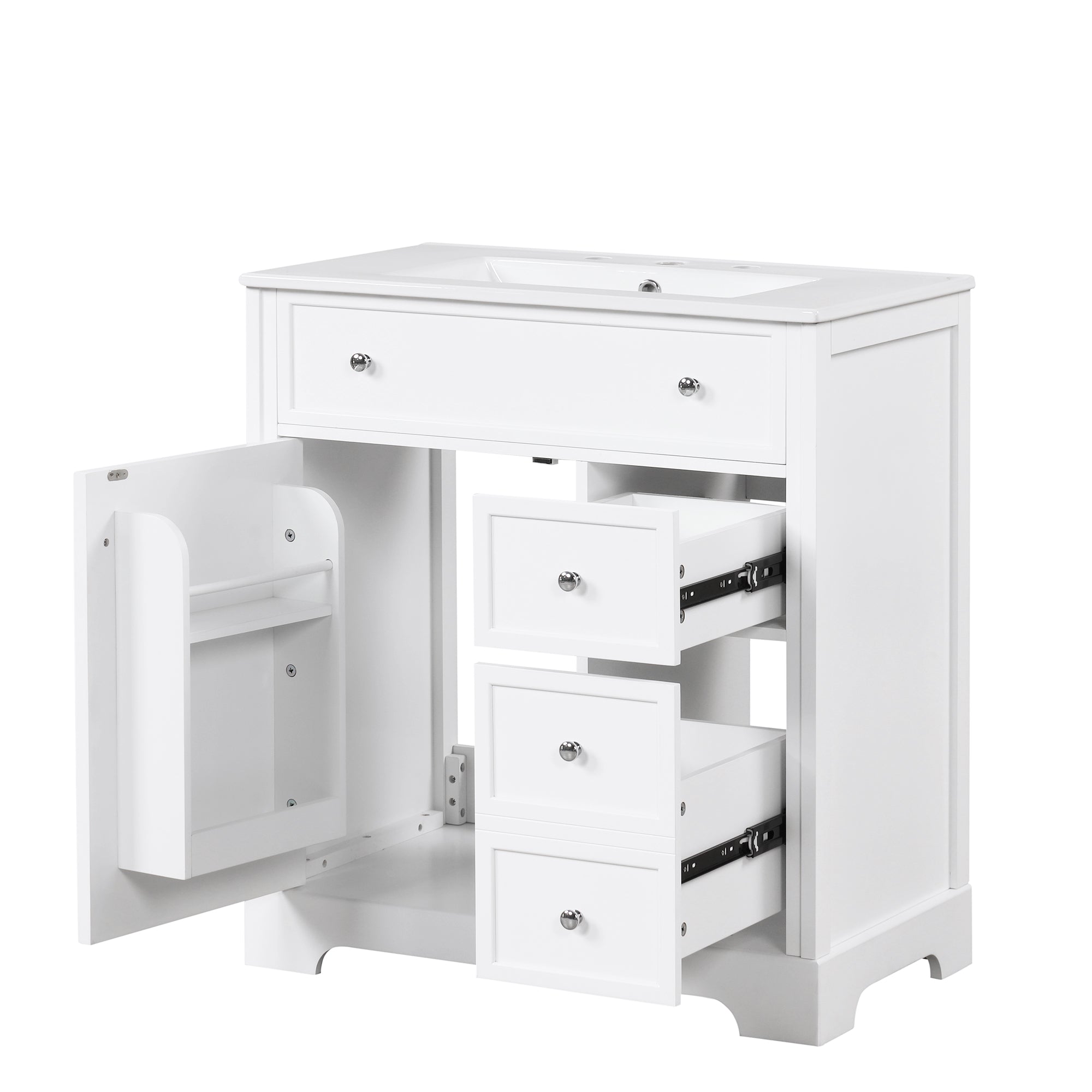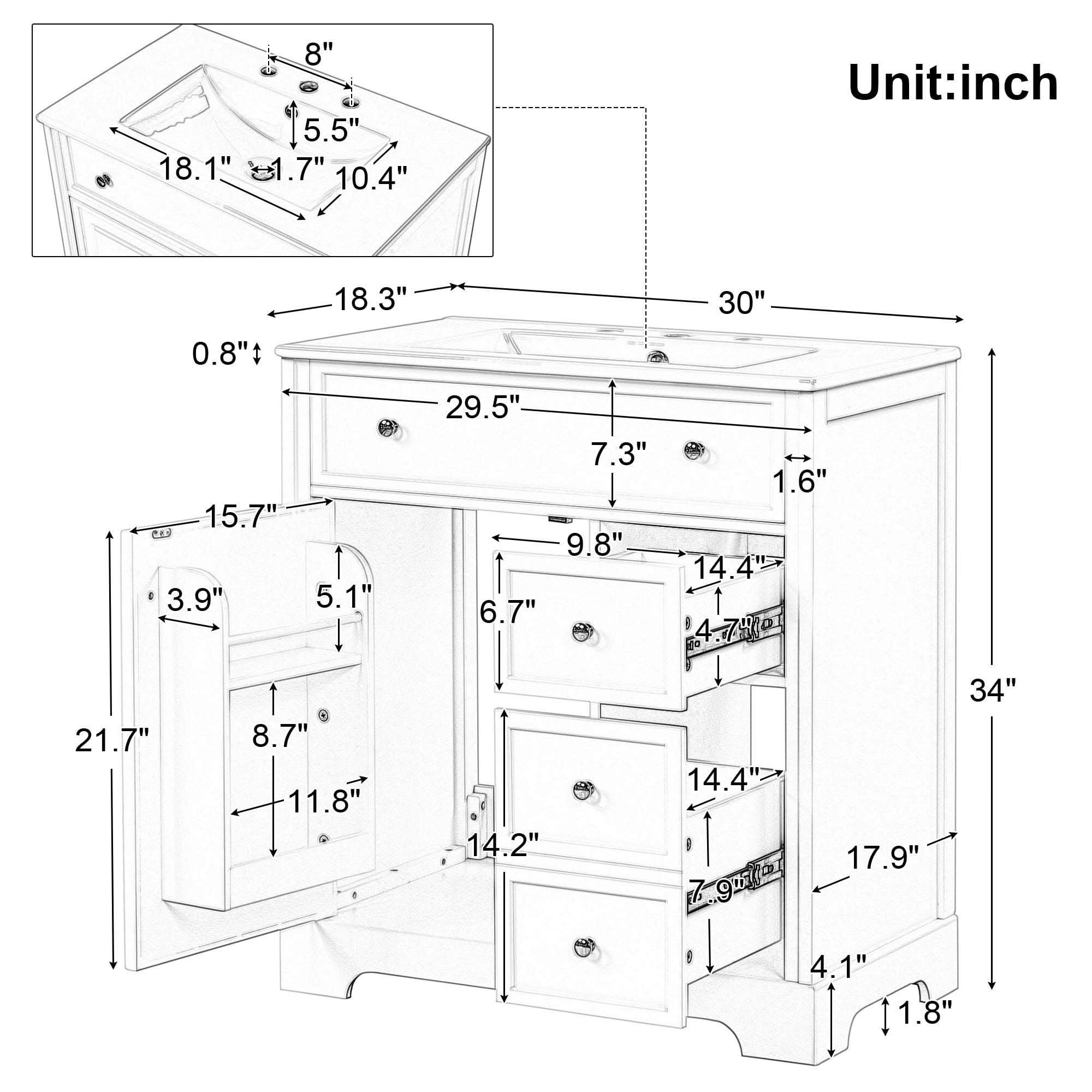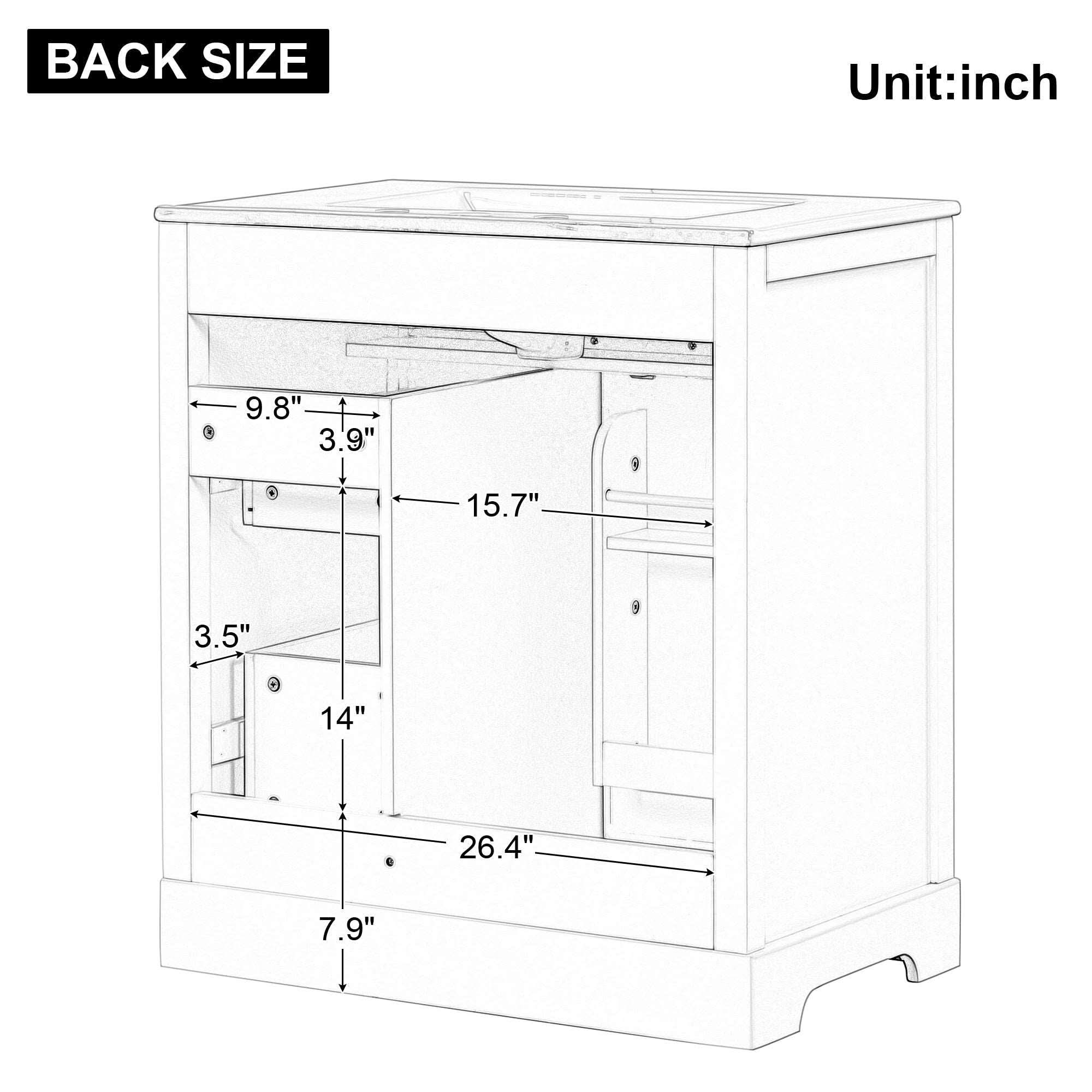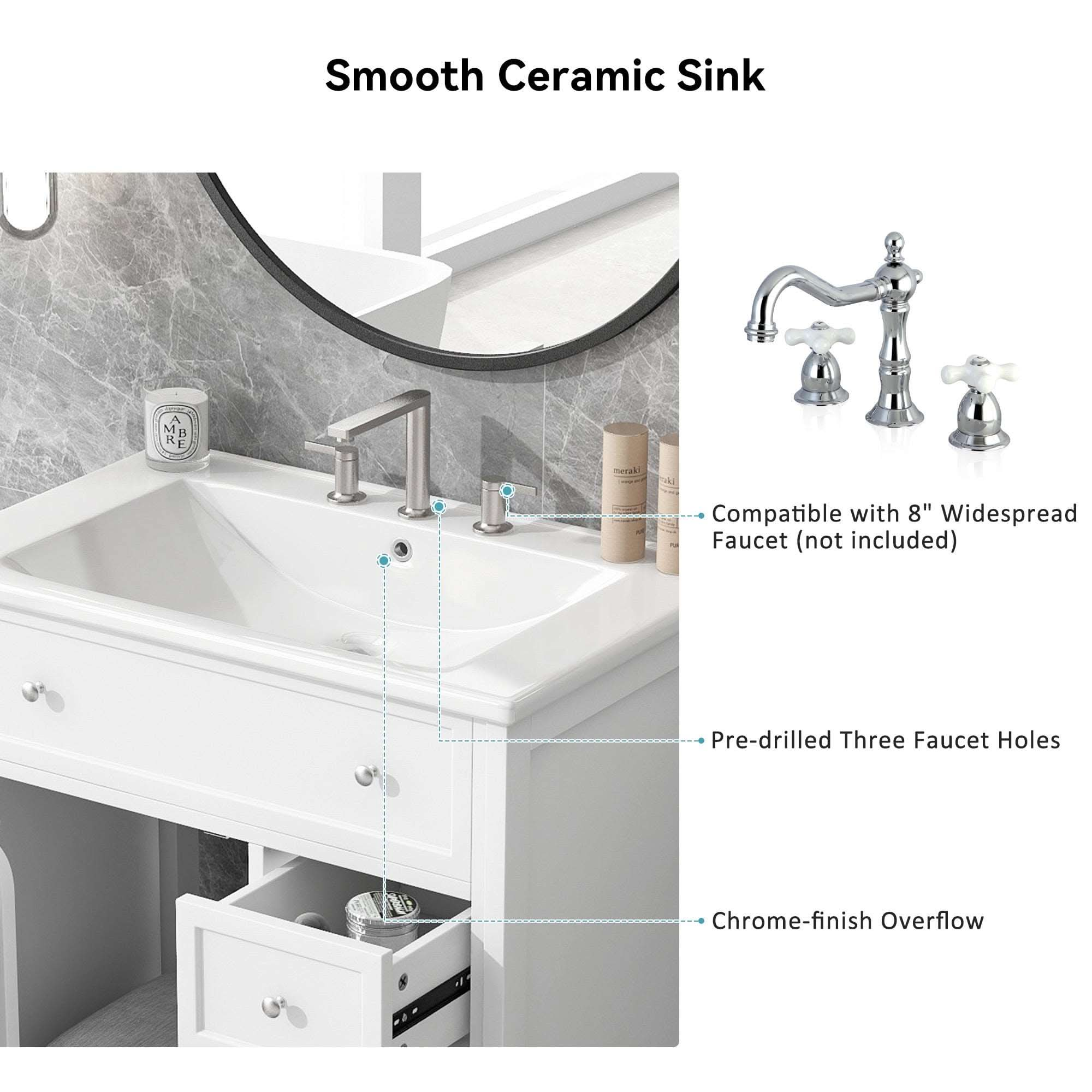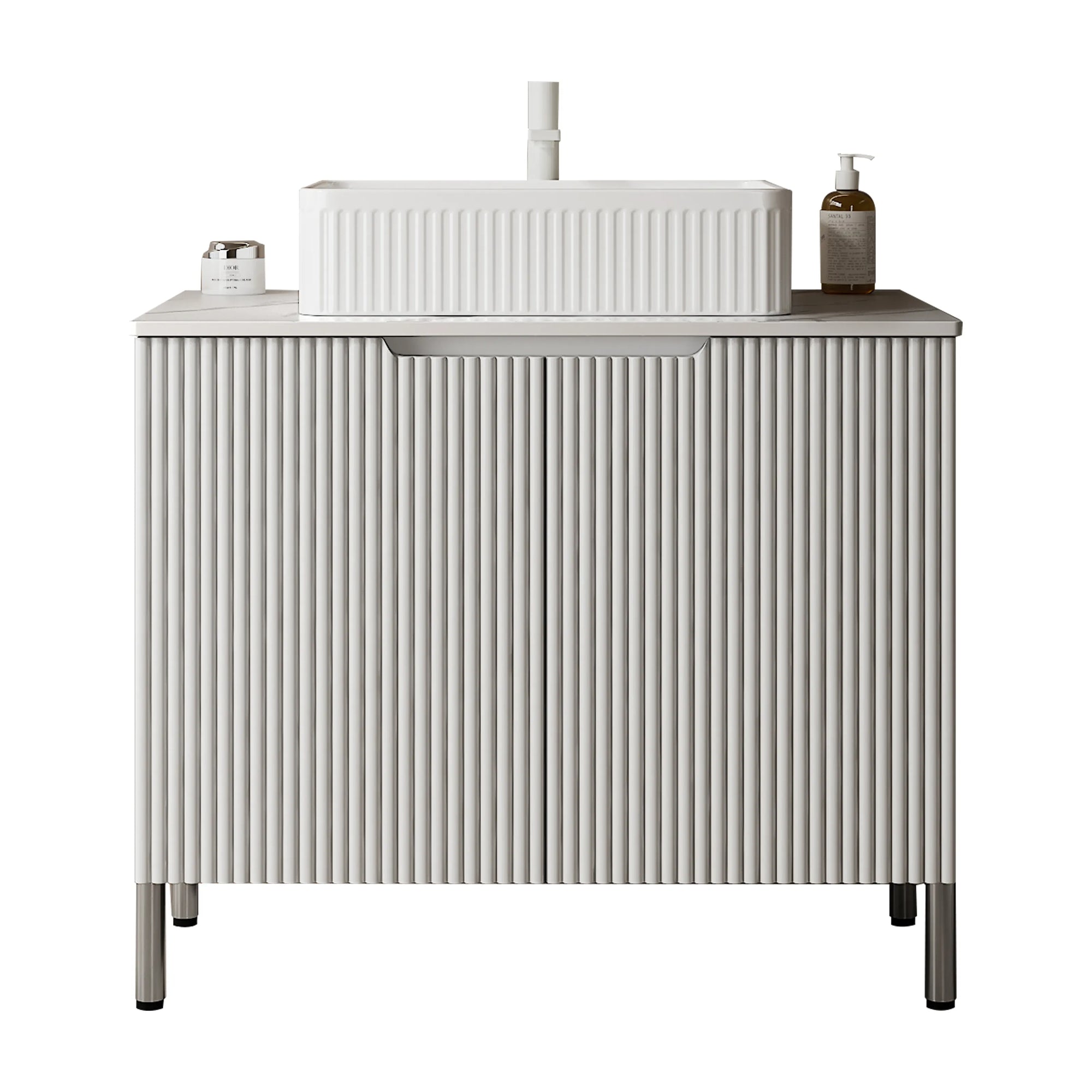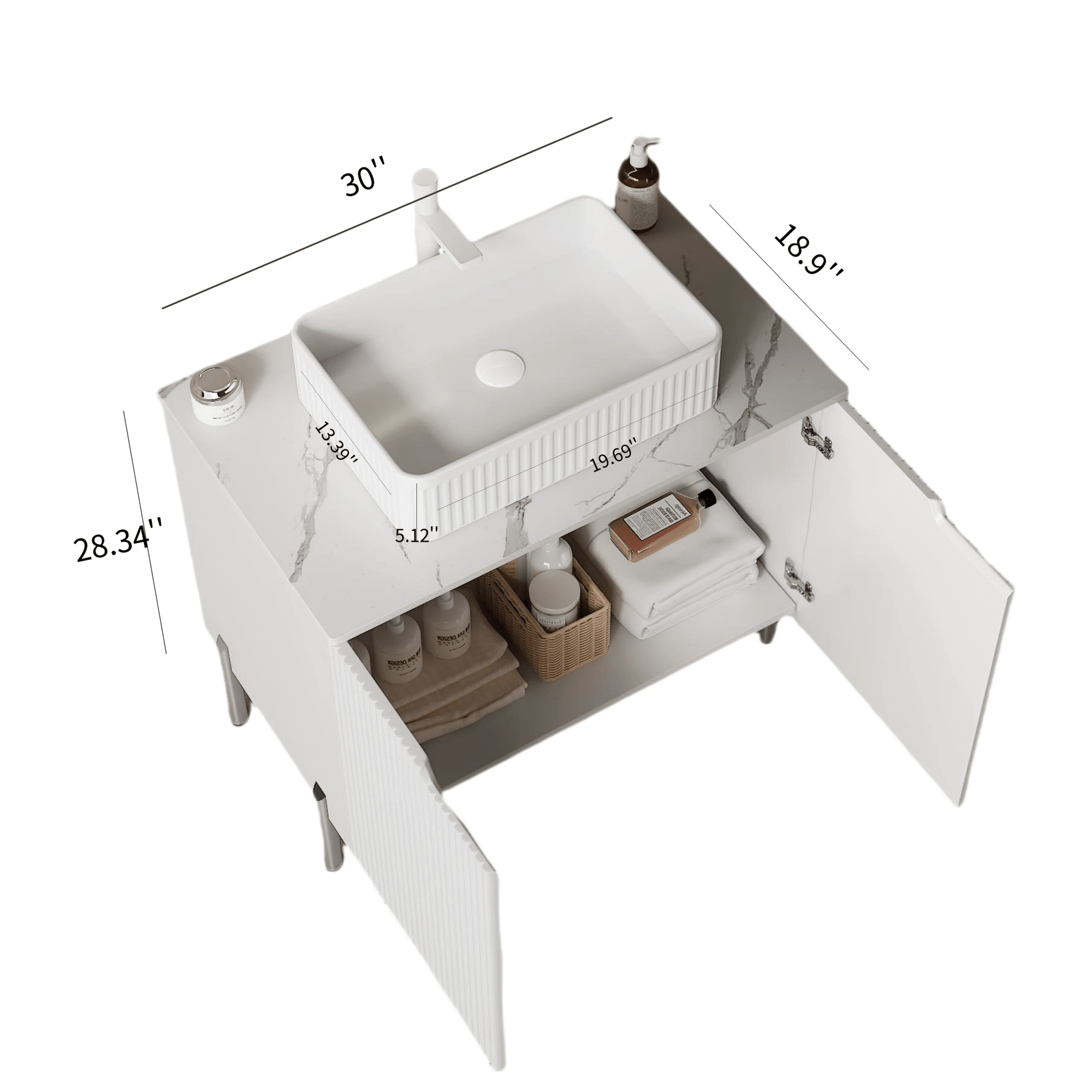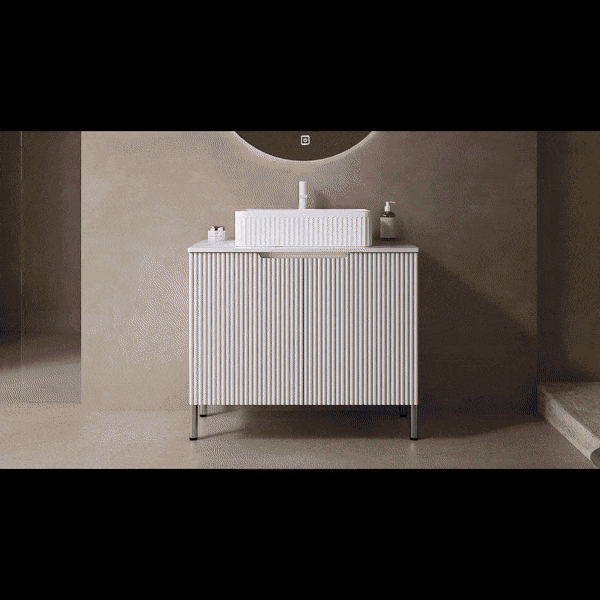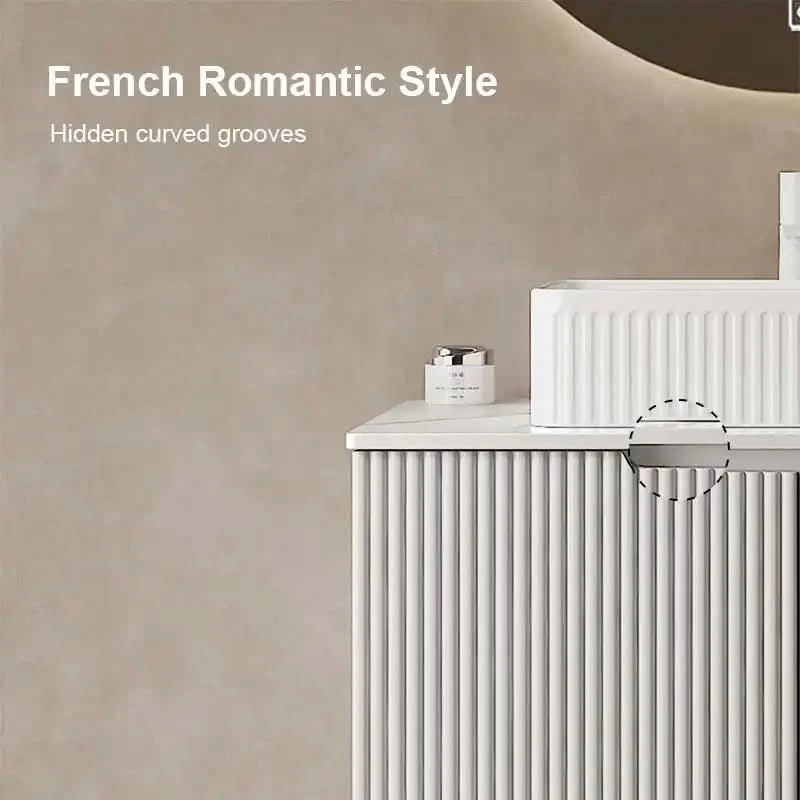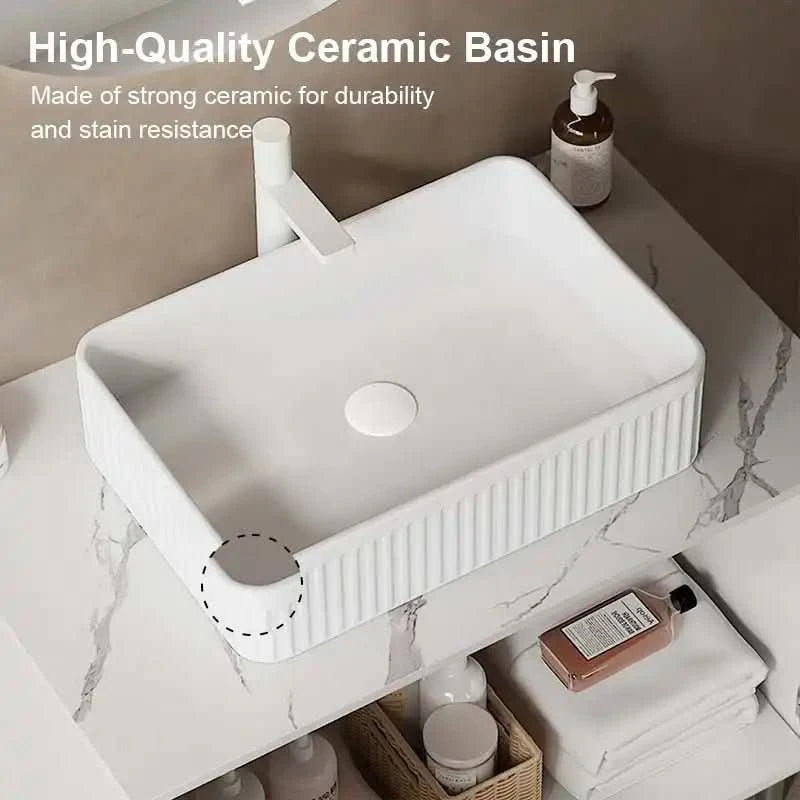Choosing the right material for your bathroom vanity is one of the most important decisions when designing or remodeling a bathroom. Your vanity isn’t just a decorative piece; it’s a functional centerpiece that must withstand daily use, moisture, and changing design trends. A well-made vanity can last for years, adding beauty and value to your home. But with so many options available—ranging from solid wood to MDF to metal—how do you know what is the best material for a bathroom vanity?
In this guide, we’ll break down the pros and cons of the most popular materials used in bathroom vanities. We’ll also provide real-life examples of vanities that offer both style and durability, such as the AL Matte White Wall-Mounted Cabinet and the AL White Freestanding Cabinet, both of which are available at ACE DECOR.
Why Choosing the Right Vanity Material Matters
Before diving into specific materials, let’s first discuss why the vanity material is so critical.
-
Moisture Resistance: Bathrooms are humid environments, and the material you choose needs to withstand exposure to water and moisture without warping, swelling, or deteriorating over time.
-
Durability: A vanity is one of the most-used pieces of furniture in your home. It should be sturdy enough to handle daily wear and tear, from splashing water to heavy toiletries.
-
Aesthetic Impact: The vanity often serves as the focal point of the bathroom, making its appearance just as important as its functionality. The material affects not only how it looks but also how it feels—whether you prefer the warmth of wood or the sleekness of a modern, minimalist design.
-
Maintenance: Some materials require more upkeep than others. For instance, solid wood needs regular sealing, while MDF or metal may be more maintenance-free. Understanding the care each material requires can help you make an informed decision.
The Best Materials for Bathroom Vanities
1. Solid Wood Bathroom Vanities
Solid wood is often seen as the gold standard when it comes to bathroom vanities. Known for its timeless beauty, durability, and strength, solid wood can elevate any bathroom with its natural warmth and classic appearance.
Pros:
- Natural Beauty: Solid wood has a rich, organic appearance that can make your bathroom feel warm and inviting. Each piece of wood has unique grains and tones, giving your vanity character.
- Durability: High-quality solid wood, such as oak, maple, or walnut, can last for decades. It’s a strong material that can endure the wear and tear of daily bathroom use.
- Customizable: Solid wood can be stained, painted, or refinished, allowing you to update your vanity over time to match changing bathroom styles.
Cons:
- Sensitive to Moisture: Wood is prone to swelling, warping, or cracking in high-humidity environments like bathrooms. Regular sealing or finishing is necessary to protect it from water damage.
- Cost: Solid wood vanities tend to be more expensive than alternatives like MDF or plywood.
Example:
The AL White Freestanding Cabinet from ACE DECOR combines the timeless beauty of solid wood with modern design. Its classic white finish makes it an ideal choice for both traditional and contemporary bathrooms. This freestanding vanity offers ample storage with its drawers and cabinets, perfect for organizing bathroom essentials while adding a touch of elegance to your space.
Best for:
Homeowners looking for a high-end, long-lasting vanity that can be customized over time. Solid wood vanities work well in larger bathrooms with good ventilation, where moisture can be controlled.
2. Plywood Bathroom Vanities
Plywood is an engineered wood product made from layers of wood veneer glued together, offering an affordable yet durable alternative to solid wood. It’s widely used in bathroom vanities due to its ability to resist moisture better than other wood-based materials.
Pros:
- Moisture Resistance: Plywood is much more water-resistant than solid wood, making it less likely to warp or swell when exposed to moisture.
- Durability: High-quality plywood can be nearly as strong as solid wood, providing long-lasting durability without the same level of maintenance.
- Affordability: Plywood is a cost-effective alternative to solid wood, offering similar durability at a lower price point.
Cons:
- Less Luxurious: While plywood can be finished to look like solid wood, it doesn’t offer the same rich, natural beauty. The visible edges of the layers may also detract from the appearance if not finished properly.
- Vulnerability: Cheaper, lower-grade plywood can delaminate (the layers separate) or be less resistant to prolonged moisture exposure.
Example:
The AL Matte White Wall-Mounted Cabinet is an excellent example of how plywood can be used in modern bathroom designs. This vanity's minimalist style maximizes floor space, making it ideal for smaller bathrooms. Its white matte finish gives it a sleek, contemporary look, and the wall-mounted design prevents moisture buildup on the floor around the vanity.
Best for:
Homeowners seeking a durable, moisture-resistant option without the high cost of solid wood. Plywood vanities work particularly well in busy family bathrooms or in homes where affordability is a key consideration.
3. MDF (Medium-Density Fiberboard) Bathroom Vanities
MDF is a man-made material created by breaking down hardwood and softwood residuals into wood fibers, which are then mixed with resin and pressed into sheets. It’s one of the most commonly used materials for bathroom vanities due to its affordability and smooth, even finish.
Pros:
- Affordability: MDF is one of the most cost-effective materials for bathroom vanities, making it accessible for budget-conscious homeowners.
- Smooth Finish: MDF’s smooth surface is perfect for painting, giving it a flawless, polished appearance that can mimic the look of more expensive materials.
- Water-Resistant Coating: Most MDF vanities come with a protective coating that helps resist moisture, making them more durable than particle board.
Cons:
- Not Naturally Water-Resistant: While MDF can handle some exposure to moisture, it’s still prone to swelling or warping if exposed to excessive water over time.
- Limited Durability: MDF is not as strong or durable as solid wood or plywood and is more prone to scratches and dents.
Example:
For homeowners looking for an elegant yet affordable vanity, the AL White Walnut Wall-Mounted Cabinet from ACE DECOR is a great choice. This vanity combines the sleek appearance of MDF with a modern walnut finish, adding a touch of sophistication to any bathroom. Its wall-mounted design also makes it perfect for smaller spaces or contemporary layouts.
Best for:
Budget-conscious homeowners who want a modern, smooth-finished vanity that looks high-end but doesn’t come with the maintenance requirements of solid wood. MDF is particularly well-suited for guest bathrooms or powder rooms that don’t see as much moisture as master bathrooms.
4. Particle Board Bathroom Vanities
Particle board is made from wood chips and sawdust that are bonded together with resin and pressed into sheets. It’s the most affordable material for bathroom vanities, but it comes with significant trade-offs in terms of durability and water resistance.
Pros:
- Low Cost: Particle board vanities are highly affordable, making them an attractive option for budget-conscious homeowners or rental properties.
- Lightweight: Particle board is lighter than solid wood or plywood, making installation easier.
Cons:
- Low Durability: Particle board is more prone to damage than other materials. It can easily swell, warp, or crack when exposed to moisture.
- Short Lifespan: Particle board vanities tend to wear out faster, especially in high-moisture environments like bathrooms.
Best for:
Temporary solutions, rental properties, or low-traffic bathrooms like powder rooms where the vanity won’t be exposed to much moisture. Particle board vanities are not ideal for long-term use in bathrooms that see daily water exposure.
5. Metal Bathroom Vanities
Metal vanities, typically made from stainless steel or aluminum, offer a sleek, modern look and are highly resistant to moisture and humidity. They are commonly found in industrial or contemporary bathroom designs.
Pros:
- Moisture and Rust Resistant: Metal vanities are highly resistant to water damage, rust, and corrosion, making them perfect for high-moisture environments.
- Durability: Metal is one of the most durable materials available for vanities. It’s unlikely to crack, warp, or fade over time.
- Modern Aesthetic: Metal vanities offer a minimalist, industrial look that can be striking in modern bathrooms.
Cons:
- Cold Appearance: Metal can feel cold or impersonal, making it less suitable for those seeking a warm, cozy bathroom design.
- Limited Design Flexibility: Metal vanities are generally more suited to modern or industrial designs, so they may not fit more traditional or rustic bathrooms.
Best for:
Modern or industrial-style bathrooms where a sleek, minimalist look is desired. Metal vanities are great for bathrooms that experience a lot of moisture, such as those with open showers or wet-room designs.
Choosing the Right Material: Factors to Consider
When selecting the best material for your bathroom vanity, consider the following factors:
1. Moisture Exposure
Bathrooms are humid environments, and materials like solid wood need proper sealing to prevent warping. Plywood, metal, and MDF with protective coatings are better suited for high-moisture settings.
2. Maintenance
Materials like solid wood require regular upkeep, while MDF and metal are lower-maintenance options. Consider how much time you’re willing to spend maintaining your vanity.
3. Aesthetic Preferences
Your personal style will dictate which material works best. If you prefer a natural, traditional look, solid wood or wood veneers are ideal. For a modern, sleek appearance, metal or MDF may be the best choice.
4. Budget
Materials like solid wood and plywood are more expensive, while MDF and particle board are more affordable. However, cheaper materials may not last as long, so consider the long-term costs of replacing a lower-quality vanity.
Frequently Asked Questions (FAQ)
Q1: What is the most durable material for a bathroom vanity?
A: Plywood and metal are among the most durable materials for bathroom vanities. Both are highly resistant to moisture and provide long-lasting performance.
Q2: Can I use solid wood for my bathroom vanity?
A: Yes, solid wood is a great choice for a bathroom vanity, but it requires proper sealing and regular maintenance to prevent moisture damage.
Q3: Is MDF a good material for bathroom vanities?
A: MDF is an affordable option for bathroom vanities. While it’s not as durable as solid wood or plywood, it’s perfect for guest bathrooms or powder rooms where moisture exposure is limited.
Q4: How do I maintain a solid wood vanity?
A: To maintain a solid wood vanity, regularly apply a water-resistant sealant and clean spills immediately to prevent water damage.
Conclusion
Choosing the best material for your bathroom vanity is about balancing style, durability, and maintenance needs. Whether you opt for the classic beauty of solid wood, the practicality of plywood, or the sleek finish of MDF, the material you choose will impact your bathroom's functionality and aesthetic. Brands like ACE DECOR offer a wide variety of vanities, such as the AL Matte White Wall-Mounted Cabinet and the AL White Freestanding Cabinet, that combine style and durability to meet the needs of any bathroom.
By considering the factors mentioned above, you’ll be able to choose the perfect vanity that suits both your design preferences and functional requirements.
